Дизайн и функциональные характеристики сотовых телефонов начали интенсивно развиваться, начиная с 1983 года.
Первый этап отмечен телефоном DynaTAC компании Motorola, который появился на экранах в фильме «Уолл-стрит» с участием
Майкла Дугласа в роли финансового магната. Представителем сегодняшнего этапа развития является телефон iPhone 3Gs.
Кстати, у нас есть PDA версия Фишек.
Motorola DynaTAC 8000X 25 лет назад, 13 июня 1983 компания Motorola выпустила первый коммерческий мобильный телефон «DynaTAC 8000X». На разработку «DynaTAC 8000X» было потрачено более 10 лет и выделено более 100 миллионов американских долларов. «DynaTAC 8000X» весил 800 грамм, хранил 30 телефонных номеров, имел 1 мелодию и стоил 3995 американских долларов. В режиме разговора аккумулятора хватало почти на один час.
1989 год Motorola MicroTAC 9800X Первый по-настоящему портативный телефон. До его выпуска большинство сотовых телефонов предназначалось только для установки в автомобилях из-за своих габаритов, не подходящих для ношения в кармане.
Nokia 1011 Это был первый GSM телефон массового производства. Он выпускался вплоть до 1994 года.
1996 год Motorola StarTAC Первый складной сотовый телефон. К тому же он был в числе первых, имевших экран с ячейками.
Nokia 8110 Этот телефон получил еще одно название «телефон – банан» и стал популярен благодаря первому фильму «Матрица».
Коммуникатор Nokia 9000 Первая серия смартфонов с процессором Intel 386.
1998 год Nokia 9110i Этот телефон был повторением серии коммуникаторов Nokia и весил значительно меньше своего предшественника – смартфона.
Nokia 5110 Эта Nokia была очень популярен долгое время после выхода.
1999 год Nokia 8210 Пользователи любили за его симпатичный дизайн и не любили за тусклый экран.
Nokia 7110 Первый мобильный телефон с браузером WAP.
Nokia 5210 Этот телефон известен своей долговечностью и сменным корпусом с защитой от влаги.
Benefon Esc! Первая модель со встроенной системой GPS. В основном он продавался в Европе.
Nokia 3210 Было продано примерно 160 миллионов этих телефонов. Это первый аппарат со встроенной антенной (!) и функцией Т9, используемой при написании текстовых сообщений.
2000 год Ericsson R380 Характерным отличием модели R380 был черно-белый сенсорный экран, частично закрывающийся панелью.
Nokia 3310 А это настоящий хит! Им многие даже открывали пиво. Дубовый, неубиваемый телефон ) Было продано примерно 126 миллионов аппаратов 3310
2001 год Nokia 5510 Характерной чертой этого телефона является QWERTY-клавиатура. Также он мог держать в памяти до 64 Мб музыкальных файлов.
Nokia 8310 А этот аппарат имел инфракрасный порт, полностью функциональный календарь и радио FM (!).
Ericsson T39 Эта маленькая телефонная трубка была первым телефоном с технологией Bluetooth.
Ericsson T66 Эта миниатюрная модель от компании Ericsson была размером с сигарету (видимо, длиной).
Ericsson T68 Первый телефон Ericsson с цветным экраном.
Siemens S45 Первый мобильный телефон производства Siemens с функцией GPRS, а также оперативной памятью 360 Кб. На тот момент такой объем памяти считался большим.
2002 год Nokia 3510(i) Первый телефон Nokia, с помощью которого GPRS стал массово использоваться. Первый бюджетный многофункциональный телефон с цветным экраном.
Nokia 7650 Это первый телефон Nokia со встроенной камерой. «Засветился» в фильме «Особое мнение». Первый смартфон серии 60
Sony Ericsson P800 Этот смартфон характеризуется сенсорным экраном и объемом памяти до 128 Мб. Очень крутая модель была ☺ чуть ли не 1000 долларов стоила
Nokia 6100 Главными ее особенностями являются, пожалуй, красивый дизайн и тонкий корпус )
Nokia 6310i Модель 6310i быстро приобрела популярность в деловых кругах благодаря несложности в обращении и длительной работе аккумулятора.
Sanyo SCP-5300 Первый телефон со встроенной камерой. Несмотря на то, что изображение получалось низкого качества, он был первым в своем роде.
2003 год Nokia 1100 Примерно 200 миллионов телефонов этой чрезвычайно популярной модели было продано с момента ее выпуска в 2003 году. По слухам, стоимость этого телефона в криминальных кругах достигала 32000 долларов США, поскольку с помощью него можно было однократно перехватывать банковские пароли (видимо, это стоимость с уже украденными паролями, т.к проще такой в магазине купить за его номинальную стоимость:) ).
Nokia N-Gage Ответный вызов Nokia на игровое устройство Game Boy advance. Получив несколько похвал, этот телефон с игровой системой был предан забвению из-за неудобного интерфейса.
PalmOne Treo 600 Был популярен с 2003 по 2004 годы до тех пор, пока телефон BlackBerries не оказался на пике славы. Он сохранял заряд три или четыре дня и прекрасно сочетал в себе телефон, КПК, камеру и бизнес-средства на выбор.
Nokia 2100 Эта модель имела широкий ассортимент расцветок и отличалась монохромным экраном.
Nokia 6600 В народе прозван «пингвином». Один из первых телефонов Нокии с экраном, отображающим 65 тысяч цветов.
BlackBerry Quark 6210 Первый телефон, объединенный с КПК, компании Research In Motion.
BlackBerry 7210 Первый телефон с цветным экраном торговой марки BlackBerry.
Nokia 7600 Один из первых 3G-смартфонов.
2004 год Motorola Razor V3 На момент выпуска этот телефон стал эталоном глянцевого дизайн.
Sony Ericsson P910 Привлекательный смартфон с откидным флипом, qwerty-клавиатурой.
Nokia 7610 Первый смартфон компании Nokia с камерой, имеющей разрешение 1 мегапиксель.
Nokia 3220 Первый бюджетный телефон Nokia с EDGE.
Nokia 7280 В журнале Fortune этот телефон был в списке лучшей продукции 2004 года. Также его называли телефон – «помада».
2005 год Sony ericsson K750 Это один из первых телефонов, имеющих камеру 2мпкс и получивших широкое распространение в России
Nokia 1110 Этот телефон с технологией GSM выпускался как низкобюджетное устройство и приобрел популярность в развивающихся странах.
Nokia 6680 Один из первых 3G-смартфонов. Считался очень дорогим на момент выпуска.
HTC Universal Это был первый КПК-телефон с технологией 3G на базе Windows Mobile производства НТС.
Motorola RAZR V3 Magenta Этот ярко розовый телефон стал модной штучкой того времени.
2006 год Nokia N73 Этот весьма популярный смартфон продавался миллионами по всему миру и до сих пор широко используется, один из первых телефонов Nokia, обладающих камерой 3.2 млн пикс.
Motorola Q Убийца BlackBerry от Motorola.
BlackBerry Pearl Первый телефон компании RIM с разумным дизайном. Модель BlackBerry Pearl до сих пор есть в продаже.
KDDI Penck Эта модель со сказочным дизайном доступна только в Японии.
O2 XDA Flame Модель 02 XDA Flame – первый телефон-КПК с двухъядерным процессором.
Nokia E62 Одна из первых моделей Nokia с QWERTY-клавиатурой. Индекс ”E” обозначает принадлежность модели к бизнес-серии.
2007 год iPhone Первый iPhone был выпущен в июне 2007 года. В наличии у него имелся датчик с автоматическим вращением, сенсор технологии multi-touch с возможностью реагирования на несколько касаний, , тачскрин, который заменил традиционную раскладку клавиатуры QWERTY , превосходный дизайн, а также множество других характеристик, которые в значительной степени помогли компании Apple завоевать рынок.
LG Prada KE850 Телефон с сенсорным экраном завоевал награду Red Dot Design Award в 2007 году и получил звание “Лучший из лучших”.
LG Voyager Эта модель была разрекламирована компанией LG как телефон с функциями iPhone.
HTC Touch Ответ компании HTC на появление устройства iPhone.
Коммуникатор Nokia E90 Обладает двумя полноценными дисплеями, бизнес-серия.
Nokia N95 Отличительной характеристикой этого популярного смартфона компании Nokia был двойной слайдер, открывающийся в обе стороны. Этот смартфон Nokia был одним из первых с GPS
LG Shine Это телефон тоже получил награду Red Dot в 2007 году. Также он выпускался в расцветках «золото» и «титановый черный».
2008 год iPhone 3G Устройство iPhone 3G вышло в свет в июле 2008 года. Получил очень широкую распространенность в России. В молодежных кругах считается очень модно иметь iPhone, наверное, из-за его стоимости.
Телефон T-Mobile G1 Телефон G1 был первым аппаратом, выпущенным с рабочей системой Android, разработанной Google. Также он известен как HTC Dream. В апреле 2009 года было продано миллион этих устройств.
Nokia N96 Cмартфон компании Nokia с GPS.
Nokia 5800 XpressMusic Этот телефон дебютировал в фильме «Темный рыцарь». Якобы является «убийцей iPhone», обладает сравнительно небольшой стоимостью относительно своего конкурента.
BlackBerry Storm Эта модель выступала в качестве прямого конкурента аппарату iPhone 3G и стала первым телефоном производства компании RIM без клавиатурной раскладки QWERTY с сенсорным экраном.
BlackBerry Bold Компромиссное решение для желающих иметь модель Blackberry с технологией 3G и раскладкой QWERTY.
Nokia E63 Продолжении E-серии с qwerty-клавиатурой.
Nokia N79 Модель Nokia N79 имеет GPS, камеру с разрешением 5 мегапикселей с оптикой Carl Zeiss и линзами Tessar и многие другие характеристики.
HTC Touch Diamond Отличительной особенностью этого привлекательного смартфона является прочный сенсорный экран, пригодный для распознавания азиатских букв.
Nokia E71 Стальной корпус Nokia легко поместится на вашей ладони.
2009 год Prada II or LG KF900 Вторая попытка Prada, разработанного компанией LG. В этой модели появилась выдвигающаяся клавиатура с раскладкой QWERTY.
LG Arena Первый телефон производства LG с пользовательским интерфейсом типа 3D S-Class. Этот интерфейс ориентируется на то, как повернут телефон к пользователю,
HTC Magic Очередная модель компании HTC со рабочей системой Android, разработанной Google.
iPhone 3GS Буква «S» — от Speed, скорость. Новинка обладает новым процессором, 3-мегапиксельной камерой с автофокусом, поддержкой VGA-видео 30 кадров в секунду, цифровым компасом и многим другим
Ещё в 2013 году я публиковал статью Старая реклама сотовых телефонов и смартфонов (с 1980-х годов по конец 2000-ых), там можно понаблюдать за самыми яркими телефонами с 1980-х годов.
Но в этот раз я хочу проследить именно за смартфонами — коммуникаторами, умными телефонами, фаблетами, плафонами и другими устройствами того же типа, одно только определение названия которых вызывало баталии среди гиков. И поэтому начать нужно именно с IBM Simon, выпущенного более 20 лет назад. Затем мы перейдём к устройствам на Symbian, появлению первого iPhone и первого Android-смартфона от HTC, вспомним устройства от Nokia и завершим путешествие новейшими гаджетами, представленными в 2016 году.
В комментариях прошу делиться воспоминаниями и давать ссылки на собственные обзоры.
Если в статье не хватает конкретной модели — пожалуйста, напишите о ней в комментариях с изображением. Так мы сделаем «Эволюцию» более полной.
IBM Simon
IBM Simon имел большой монохромный дисплей 4,7 дюйма с разрешением 160х293 пикселя, а весил полкило без учёта док-станции. Эта футуристическая для того времени смесь компьютера и телефона без клавиатуры, но с сенсорным экраном, совместила в себе мобильник, пейджер, органайзер, почту, будильник. Работал гаджет на 16-битном процессоре Vadem VG-230 16 МГц. Кстати, оперативной памяти тут был целый мегабайт. Хотите посмотреть, что внутри? Читайте разбор на Хабре, а в посте на Geektimes читайте, как на этот гаджет можно загрузить картинки.
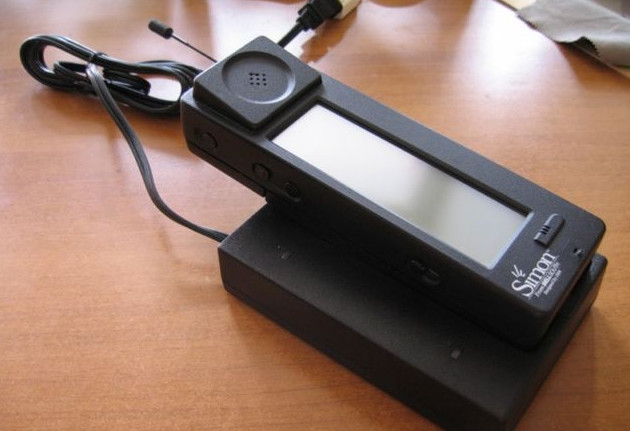

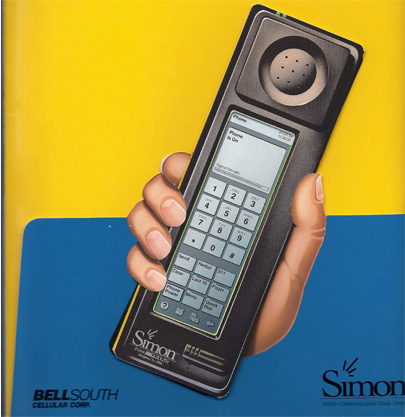
Фильм «Сеть», 1995 год.
Nokia 9000 Communicator
Можно ли было не мечтать об этом устройстве от Nokia в 1996 году? У него была клавиатура и два монохромных дисплея — внутренний 4,5-дюймовый 640х200 точек, внешний — 50х38. Весил гаджет 397 граммов — можно было отбиваться от кого угодно.
Впервые устройство назвали «Communicator».
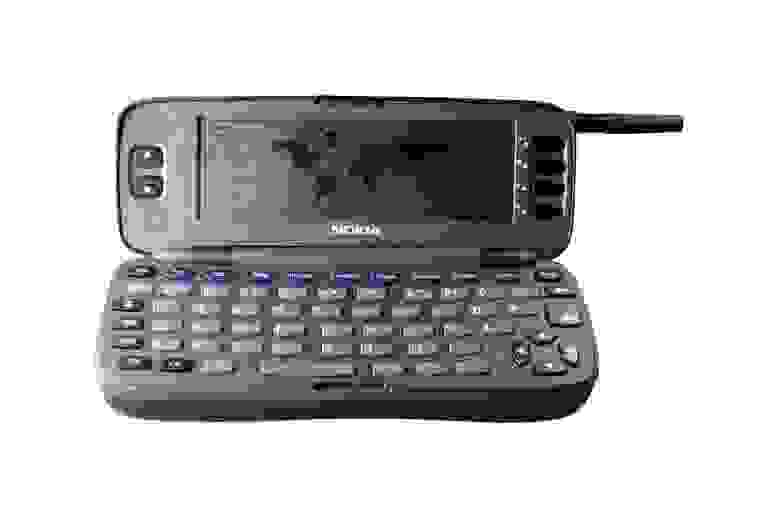
Ericsson R380
Переходим к первому устройству, которое назвали «умный телефон» в рамках рекламной кампании производителя. Это Ericsson R380, ещё один гаджет с большим 3,7-дюймовым сенсорным дисплеем и на операционной системе Symbian. До этого Ericsson делал множество наладонных компьютеров без возможности звонить и телефонов без возможности использовать их в качестве компьютеров. «Мы называем его смартфоном», — говорится в рекламе.
Устройство представили миру в декабре 1999 года, а в 2000 году начали продавать.
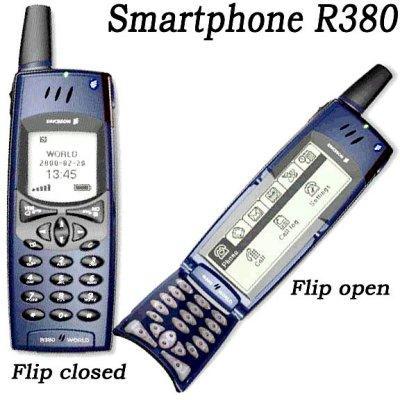
BlackBerry 5810
История Blackberry началась в 1984 году, когда студент Университета Ватерлоо Майк Лазаридис зарегистрировал RIM — Research In Motion. Компания начала с проектирования устройств для беспроводной передачи данных, а с 1990-х позаимствовала у Ericsson и RAM Mobile Data технологии передачи текста в пейджинговых сетях, после чего выпустила пейджер с QWERTY-клавиатурой, позволяющей отправлять сообщения. Далее большая часть устройств Blackberry именно так и выглядела.

Первый смартфон Blackberry появился в 2002 году. BlackBerry 5810 не имел динамика и микрофона, была нужна гарнитура для разговоров. Зато была клавиатура.

Nokia 9210
Nokia 9210 продолжила линейку «коммуникаторов» от финской компании. Выпустили гаджет на Symbian OS 6.0 в 2002 году, но я до сих пор помню, как я хотел получить такой. И не знаю, что бы я вообще с ним делал?
Nokia 9210 мог похвастаться цветным экраном 640х200 пикселей, 8 МБ оперативной и 14 МБ встроенной памяти. Работал он уже тогда недолго — 10 часов. Обзор — здесь.

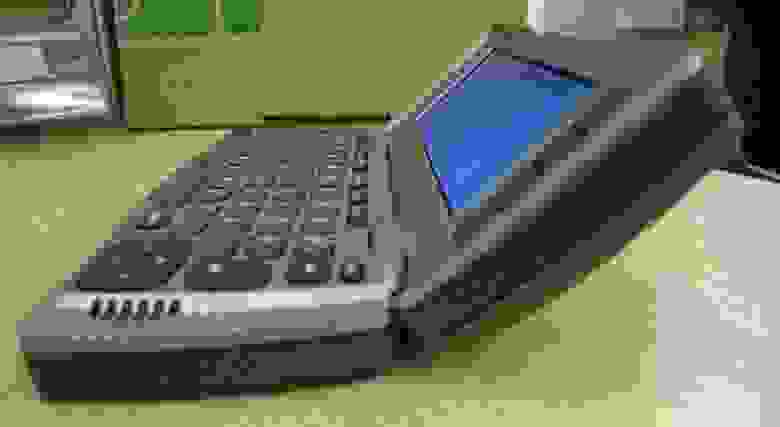
Nokia 7650
Nokia 7650, анонсированный 26 июня 2002 года, был первым смартфоном на Symbian OS — до этого были только коммуникаторы. Здесь можно начать спорить, что и как должно называться.
Устройство в СМИ окрестили «камерофоном» за встроенную камеру, и он вообще стал первым девайсом от Nokia с камерой.
Процессор — 32-битный RISC 104 МГц. Памяти — 4 мегабайта, из них пользователю доступно было только 3,4 МБ.

Sony Ericsson P800
В 2002 году Sony Ericsson представила смартфон P800 с интерфейсом UIQ 2.0, сделанной на основе Symbian OS v 7.0.

HTC Wallaby
С апреля 2002 года HTC производила карманные персональные компьютеры под управлением Windows Mobile. Первым был HTC Wallaby с процессором Intel StrongARM 206 МГц, 32 МБ оперативной и таким же количеством флеш-памяти, поддержкой MMC и SD карт, TFT-дисплеем 3,5 дюйма с разрешением 240х320 точек… Операционная система — Microsoft Pocket PC 2002 Phone Edition.
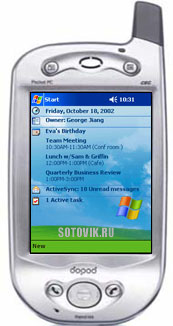

Через год появился HTC Falcon.
 ‘
‘
А в 2004 году — HTC Himalaya. У этого наладонника уже не было огромной антенны.
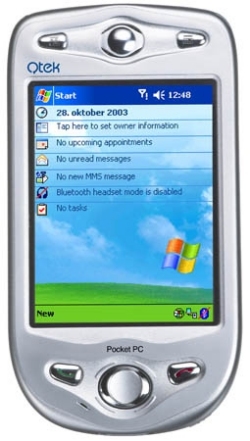
Siemens SX1
В феврале 2003 года о выходе на рынок смартфонов объявила немецкая компания Siemens с оригинальным Siemens SX1 на Symbian OS. Цифровые клавиши расположили с двух сторон корпуса. На момент начала продаж в декабре 2003 года гаджет стоил 750 долларов, но за два года подешевел до 250.

На выставке в Ганновере в 2005 году Siemens продемонстрировали новый концепт смартфона — с лазерной клавиатурой.

Sony Ericsson P910
В 2004 году выходит Sony Ericsson P910. Гаджет получил QWERTY-клавиатуру на обратной стороне флипа. Флип при этом можно вообще снять с гаджета, чтобы получить классический вариант смартфона с минимумом кнопок. Модель на Symbian построена на базе процессора ARM9 156 МГц, имеет 64 мегабайта оперативной памяти и поддерживает Memory Stick PRO Duo до 2 гигабайт.

HTC Blueangel
HTC Blueangel появился в продаже в октябре 2004 года. Его делали под разными брендами, в том числе Siemens. Диагональ дисплея — 3,5 дюйма, памяти — 96 МБ встроенной и 128 МБ оперативной. Устройство работало на Windows Mobile 2003SE. Процессор — Intel PXA263 400 МГц. Гаджет выполнен в форм-факторе слайдера с полноразмерной клавиатурой.
Позже были Alpine, Gemini, Apache, Galaxy, Wizard, Prophet, Charmer, Hermes, Trinity и множество других устройств на операционке от Microsoft.
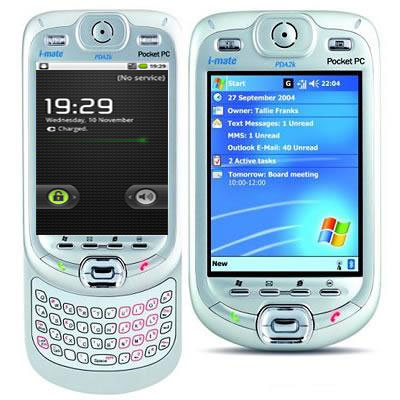
BlackBerry 7210
BlackBerry 7210 стал первым смартфоном от Blackberry с цветным дисплеем. У гаджета было 2 мегабайта встроенной памяти и батарейка на 960 мАч.

HTC Magician
Смартфон Qtek S100 производства HTC продавался с 2005 года под разными именами — 2 Xda II Mini (Asia), O2 Xda mini (Germany), T-Mobile MDA compact, i-mate JAM, Vodafone VPA Compact, Dopod 818, Krome Spy, and Orange SPV M500. Это устройство на Windows Mobile 2003 имело 64 МБ встроенной и столько же оперативной памяти, слот для карт SDIO/MMC, камеру 1,3 мегапикселя, экран 2,8 дюймов с разрешением 240х320 пикселей.


Lenovo P930
Для разработки Symbian OS в 1998 году объединились Nokia, Psion, Ericsson и Motorola. Позже к консорциуму присоединились Sony Ericsson, Siemens, Panasonic, Fujitsu, Samsung, Sony, Sharp и Sanyo. Платформа Symbian была самой популярной для смартфонов в мире в середине 2000-х. Читайте о восходе и закате Symbian здесь.
Первым гаджетом от Lenovo на Symbian стало устройство Lenovo P930 в 2005 году. Устройство поддерживало GPRS, имело цветной дисплей с возможностью ввода стилусом и 1-мегапиксельную камеру. Память можно было расширить с помощью карт памяти SD/MMC. В смартфоне был GPS-навигатор, MP3-плеер, и на него можно было ставить JAVA-приложения.

Lenovo ET980
Смартфон Lenovo ET980 на Windows Mobile 5.0 получил процессор Intel PXA270 312 MHz. Накладка на смартфон добавляла к нему обычных кнопок. Выпуск гаджета начался в 2005 году.

Google покупает Android
В июле 2005 года корпорация Google покупает Android Inc., в ноябре 2007 — объявляет о создании Open Handset Alliance и анонсирует открытую мобильную платформу Android. В том же месяце альянс представляет первую версию пакета для разработчиков. В 2008 году вышла первая версия операционной системы.
HTC P3600
В сентябре 2006 года HTC выпустила P3600 на Windows Mobile — 150-граммовый коммуникатор с TFT-дисплеем 2,8 дюйма и разрешением 240х320, двумя камерами — основной 2 МП и фронтальной, 64 МБ оперативной и 128 МБ встроенной памяти. Samsung для смартфона производил процессор.
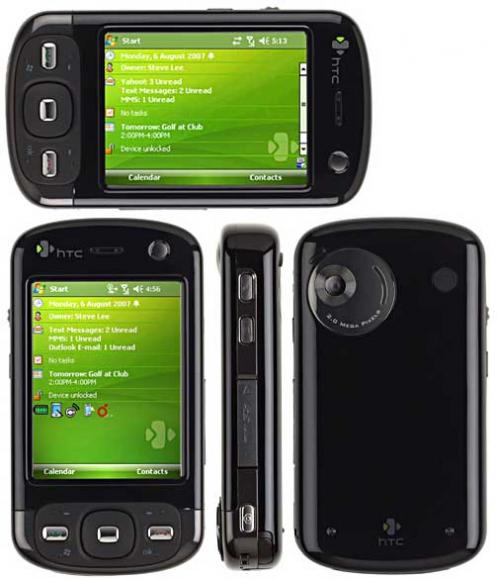
Nokia N95
В марте 2007 года финны выпустили Nokia N95. Пользователь Хабра назвал его Королём смартфонов, а в первом комментарии другой пользователь высказал своё «фи»: «qwerty клавиатуры нет, так что даже не посмотрю в его сторону».
Форм-фактор — кирпич-слайдер. Дисплей — 2,6-дюймовый 240х320 пикселей. Процессор с тактовой частотой 330 МГц. Внутренняя память 160 МБ. Камера — 5-мегапиксельная с автофокусом, электронным стабилизатором и встроенной вспышкой. Работал гаджет на Symbian OS v9.2.
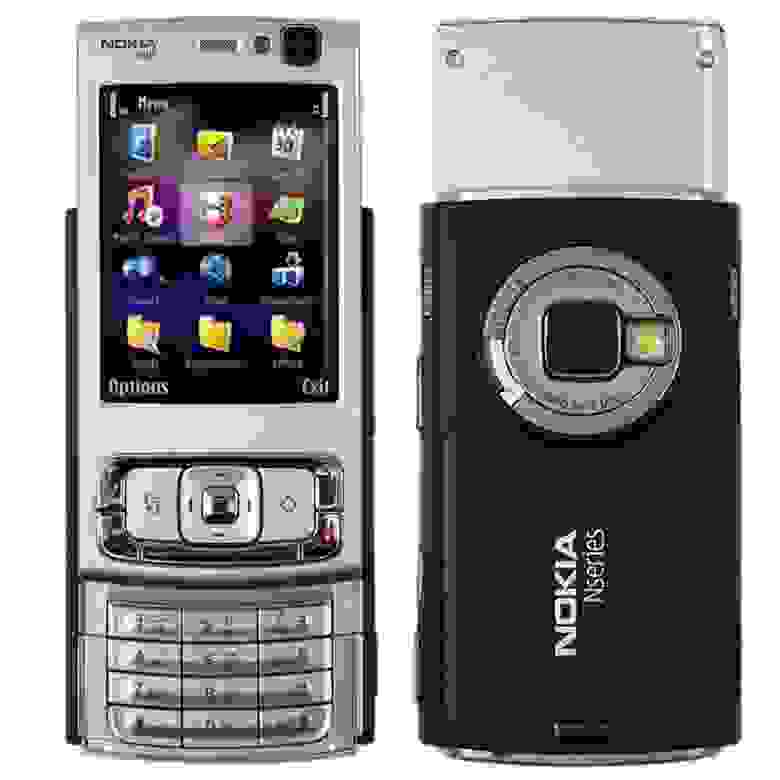
iPhone
В мае 2007 года стало известно, что уже в июне начнутся продажи Apple iPhone. Стив Джобс постарался выжать максимум из своих подчинённых, чтобы устройство было близко к идеалу. Об этом написали не одну книгу.

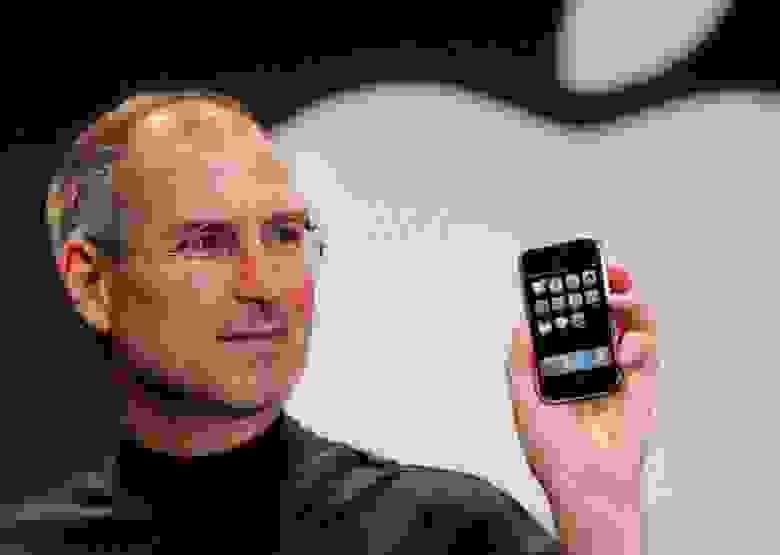
HTC S740
Смартфон HTC S740 был выпущен в 2008 году. Он построен на базе процессора Qualcomm MSM7225 528 МГц, имел по 256 мегабайт оперативной и встроенной памяти, поддерживал microSD. Диагональ экрана — 2,4 дюйма, а разрешение — 320х240 пикселей.


BlackBerry Pearl 8120
В октябре 2007 года BlackBerry выпускает один из своих первых смартфонов, направленных не на корпоративный сегмент, а на рядовых пользователей. Смартфон BlackBerry Pearl 8120 получил упрощённую клавиатуру — возможно, её можно назвать «полу-QWERTY», камеру в 2 мегапикселя и поддержку Wi-Fi. Цветной LCD-дисплей имел разрешение 240х260 пикселей.
Внутреннюю память в 64 мегабайта можно было увеличить с помощью microSD.
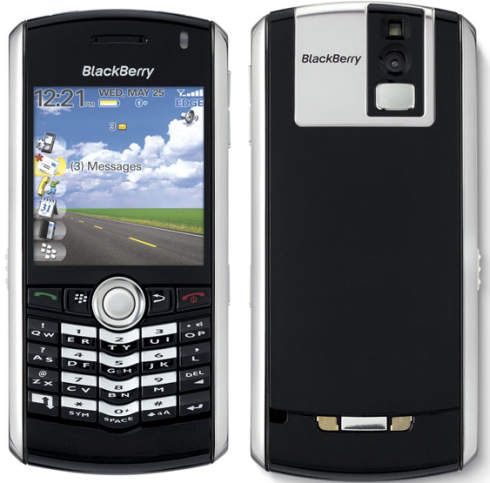
BlackBerry Bold 9000
Смартфон BlackBerry Bold 9000 получил 2,6-дюймовый дисплей (не сенсорный) с разрешением 460х320 точек, 2-мегапиксельную камеру и процессор 624 МГц. Оперативной памяти — 128 мегабайт, а встроенной — уже целый гигабайт. Это был первый смартфон от RIM с GPS. Устройство анонсировали 12 мая 2008 года, а начали продавать 9 июля 2008 года.
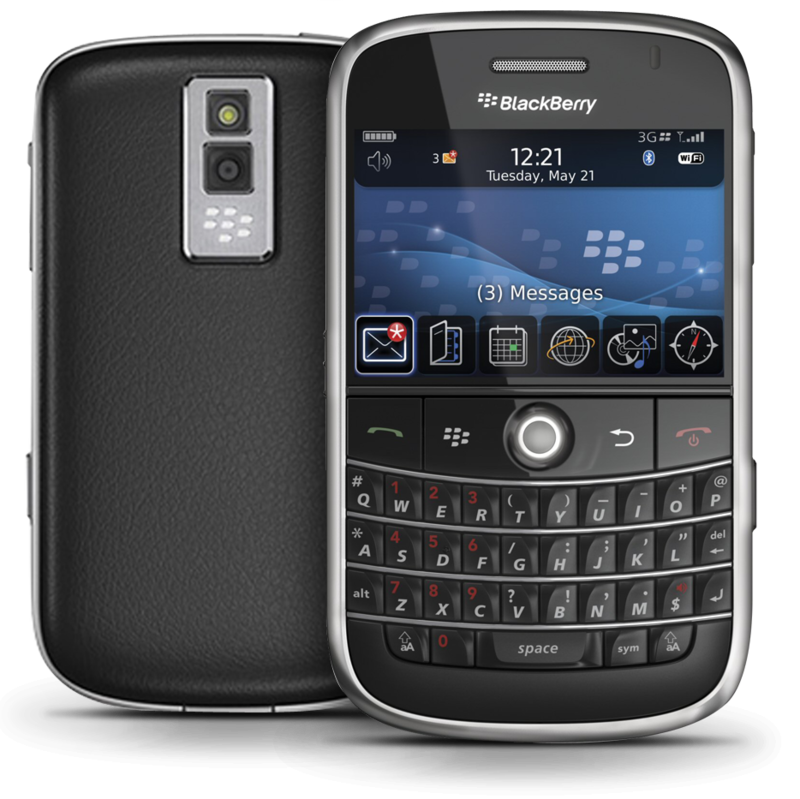
iPhone 3G
10 июня 2008 года Apple представила iPhone 3G, усовершенствованную модель, в которой компания попыталась избавиться от косяков первой версии — например, теперь устройство подключалось к 3G-сетям.

HTC Dream
Продажи HTC Dream, первого устройства HTC на Android, начались в апреле 2009 года. Впервые фото этого «GooglePhone» и «убийцы iPhone» появились в сети в сентябре 2008 года. Смартфон получил qwerty-клавиатуру, 3-мегапиксельную камеру и сенсорный 3,5-дюймовый дисплей.
Через год после выхода смартфона Apple обвинила HTC в нарушении 20 патентов и подготовила более 700 страниц с описанием претензий:
Мы можем сидеть и наблюдать, как конкуренты воруют наши запатентованные изобретения, или можем что-то с этим сделать. Мы решили принять меры. Мы полагаем, что конкуренция на рынке здоровая, но конкуренты должны создавать свои уникальные технологии, а не воровать наши.
На этот пресс-релиз с объявлением HTC войны тайваньская компания дала логичный ответ:
Нам только стало известно о намерениях Apple из пресс-релиза. Судебный документ еще не был вручен, так что мы пока не можем прокомментировать обвинения. Мы уважаем ценность патентных прав, но также мы хотим защитить свои собственные инновации. Мы изобретаем и патентуем свои собственные технологии более 13 лет.
В списке устройств, которые якобы нарушали патенты Apple, значились Nexus One, Touch Pro, Touch Diamond, Touch Pro2, Tilt II, Pure, Imagio, Dream / G1, myTouch 3G, Hero, HD2 и Droid Eris. И это можно назвать признанием со стороны Apple.


Samsung Galaxy
Первый смартфон в линейке Galaxy корейская компания Samsung анонсировала 27 апреля 2009 года, считанные дни спустя после начала продаж HTC Dream. Крохотный AMOLED-экран 3,2 дюйма, 5-мегапиксельная камера с автофокусом и LED-вспышкой, 3,5-миллиметровое гнездо для наушников, набор предустановленных приложений от Google, 8 ГБ встроенной памяти, аккумулятор 1500 мАч — вот чем мог похвастаться Samsung Galaxy i7500. Читайте обзор здесь.
Российский рекламный ролик — снят одним дублем.
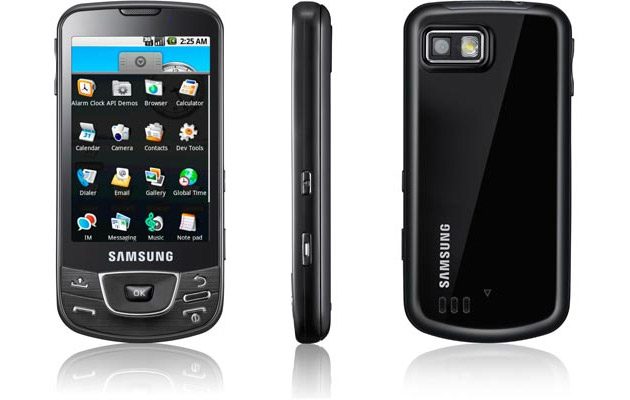
HTC Magic
Второй телефон HTC на Android — HTC Magic — вышел в апреле 2009 года, а продемонстрирован в феврале того же года на Mobile World Congress. Обзор смартфона читайте здесь. Обратите внимание на вставку вокруг камеры.

BlackBerry Storm 9500
В 2008 году BlackBerry выпустила свой первый смартфон с сенсорным экраном и без QWERTY-клавиатуры. Гаджет представили в сентябре, а выпустили в ноябре 2008 года. Устройство получило дисплей диагональю 3,25 дюйма и разрешением 360х480 пикселей. Процессор — Qualcomm MSM7600 528 МГц. Снова у гаджета было 128 мегабайт оперативной памяти. Встроенной — 1 гигабайт, и была поддержка microSD до 16 ГБ.
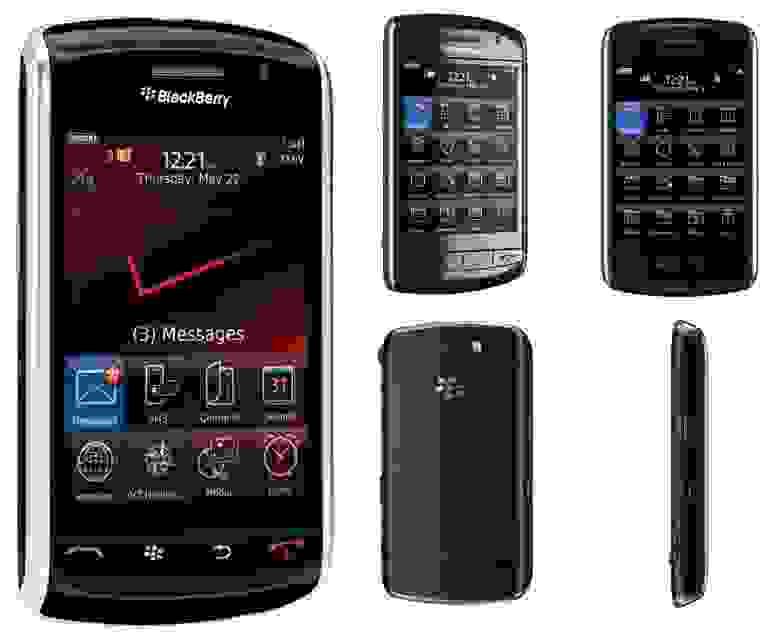
Nokia 5800 XpressMusic
Смартфон Nokia 5800 был представлен в октябре 2008 года. Устройство имело 3,2-дюймовый экран с разрешением 640х360 пикселей. Процессор Freescale MXC300-30 ARM11 434 МГц, 128 мегабайт оперативной памяти. В комплекте с гаджетом шла microSD на 8 гигабайт.
Основная камера 3,2 мегапикселя получила оптику Carl Zeiss, автофокус и светодиодную вспышку.
iPhone 3GS
8 июня 2009 года на WWDC в Сан-Франциско Apple показала iPhone 3GS с обновлённой iPhone OS 3.0. 3,5-дюймовый LCD дисплей с разрешением 320х480 пикселей разработала Apple, производил его LG. Процессор — разработанный и произведённый корейским конкурентом Samsung S5PC100 ARM 833 МГц, но аппаратно частота снижена до 600 МГц. Камера — 3 мегапикселя. Оперативной памяти — 256 МБ, встроенной — 16 или 32 ГБ. Устройство получило поддержку HSDPA-связи.

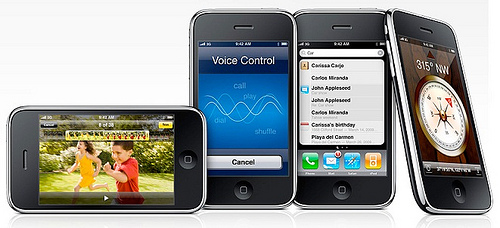
HTC Hero
HTC Hero появился в продаже в июле 2009 года, в России — в сентябре. Это был третий смартфон HTC на операционной системе Android. И первый Android-смартфон, поддерживающий Adobe Flash.
Обзор есть на Geektimes — читайте по ссылке.
Что о технических характеристиках — у Hero было 256 мегабайт флеш-памяти и 288 мегабайт оперативной. Процессор — Qualcomm MSM7600A ARM11 528 МГц или MSM7200A ARM11 528 МГц.

HTC Evo 4G
Смартфон HTC Evo 4G стал первым Android-аппаратом с поддержкой WiMAX.
Устройство на процессора Qualcomm QSD8650 1 ГГц получило 576 мегабайт оперативной памяти и 1 гигабайт встроенной, экран 4,3 дюйма с разрешением 480х800 пикселей и 8-мегапиксельную камеру.

Motorola Droid
В октябре 2009 года Motorola выпустила смартфон Droid — слайдер на Android с QWERTY-клавиатурой. Устройство работало с Wi-Fi-сетями, имело 3,7-дюймовый дисплей с разрешением 854х480, поддерживало карты памяти microSD до 16 гигабайт. Процессор — Texas Instruments OMAP 3430. Встроенной памяти — 512 мегабайт, оперативной — 256 мегабайт.
Это первый смартфон, который поставлялся с бесплатным приложением Google Maps Navigation.

На июль 2010 года Motorola Droid был самым популярным устройством на Android. А второе, третье, четвёртое, пятое, восьмое и девятое места в этом рейтинге занимали устройства от HTC.
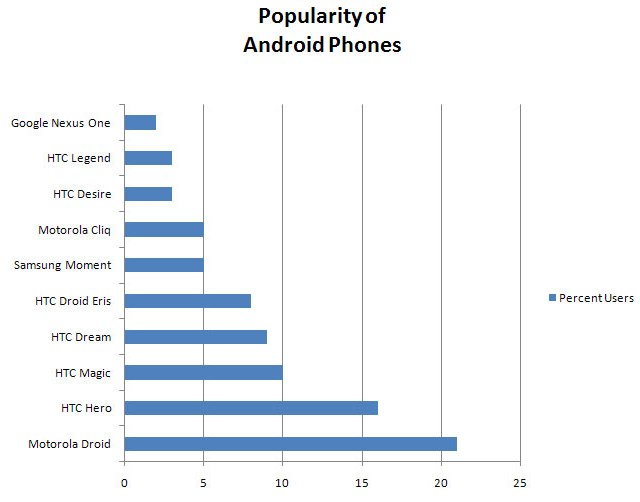
HTC HD2
В ноябре 2009 года HTC выпустила Leo (HD2). Это смартфон на операционной системе Windows Mobile, с 5-мегапиксельной камерой с автофокусом, TFT-дисплеем диагональю 4,3 дюйма с разрешением 480х800 пикселей. Процессор Qualcomm Snapdragon QSD8250 1 ГГц, 512 мегабайт встроенной и 488 мегабайт оперативной памяти. HTC Leo — первый смартфон с ёмкостным экраном на операционке от Microsoft.
Удивительно, что в обзоре смартфона на Geektimes проскочили такие фразы: «Лежит в руке как влитой, но людям с небольшими ладонями вряд ли телефон будет удобен для использования одной рукой» и «Однако он больше рассчитан на мужчин, с большими ладонями и пальцами». Напомню, дисплей — 4,3 дюйма. Сейчас несколько моих знакомых девушек ходят с Asus 5,5 дюйма и очень довольны его размером.
В других обзорах писали «HD2 действительно огромен». Смотрю на свой Lenovo Phab Plus и удивляюсь.

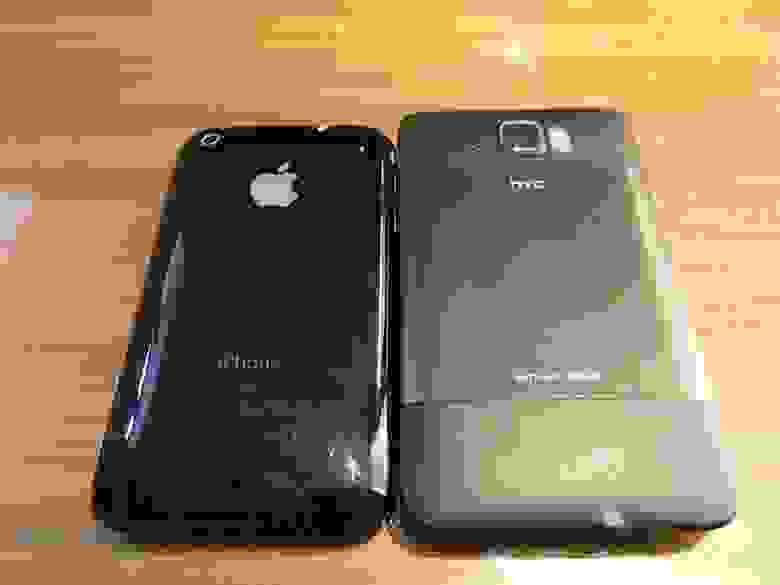

Nokia N900
В ноябре 2009 года Nokia выпускает «интернет-планшет» Nokia N900, анонсированный 2 сентября на Nokia World. Слайдер с QWERTY-клавиатурой на Maemo получил 256 мегабайт оперативной памяти и 32 ГБ флеш-памяти, слот для microSD до 32 ГБ, 5-мегапиксельную камеру, 3,5-дюймовый экран с разрешением 800х480 пикселей.
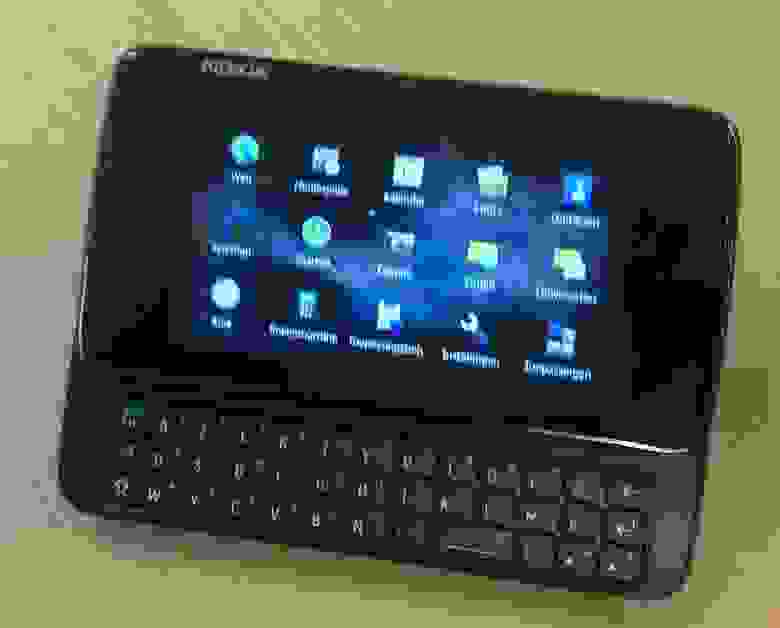
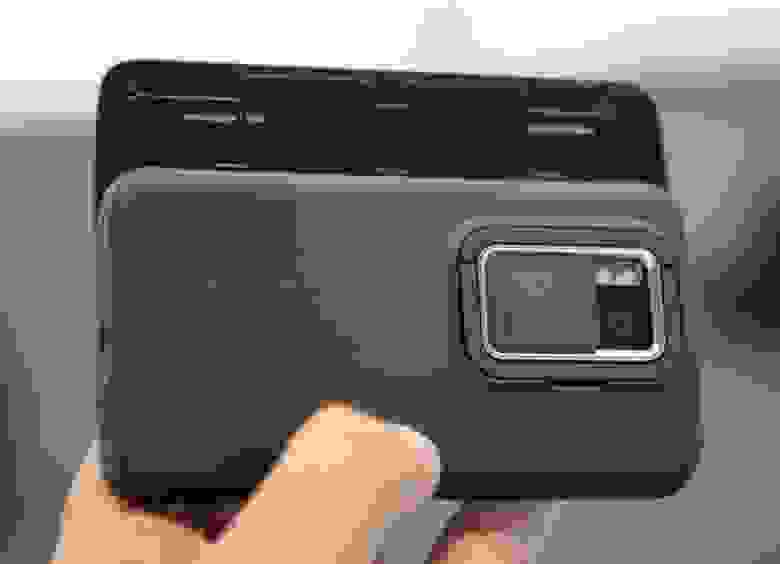
Lenovo LePhone
7 января 2010 года Lenovo представила смартфон на Android — LePhone. Аппарат получил 3,7-дюймовый дисплей с разрешением 800х480, процессор Snapdragon 1 ГГц, 8 ГБ встроенной памяти. К гаджету можно подключить внешнюю QWERTY-клавиатуру, колонки и аккумулятор. Устройство изначально направлено на китайский рынок.



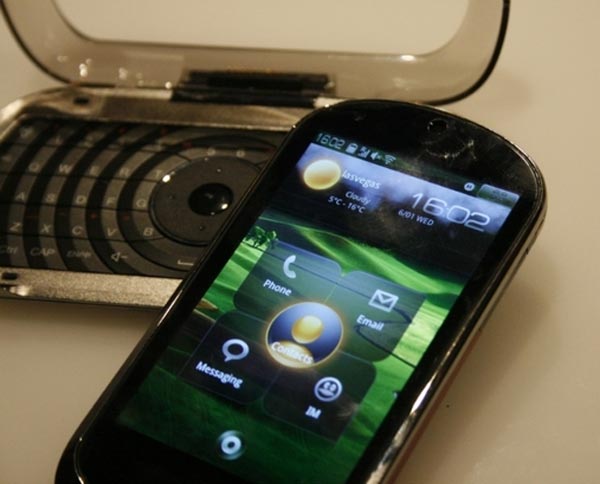
HTC Legend
1 марта 2010 года HTC начала продавать HTC Legend по цене от 750 долларов. Устройство могло похвастаться AMOLED-дисплеем размером 3,2 дюйма, операционной системой Android 2.2, процессором Qualcomm 7227 600 МГц, целыми 384 мегабайтами оперативной памяти и 512 МБ встроенной. Но память можно было расширить за счёт microSD до 32 ГБ. Почитайте обзор, вспомните, как это было.
Хоть корпус Legend и был выполнен из цельного куска алюминия, это не повлияло на качество приёма сигнала в отличие от iPhone 4, у которого уровень сигнала падал в разы, как только его брали в руку.
Задняя панель украшена вставками из пластика.

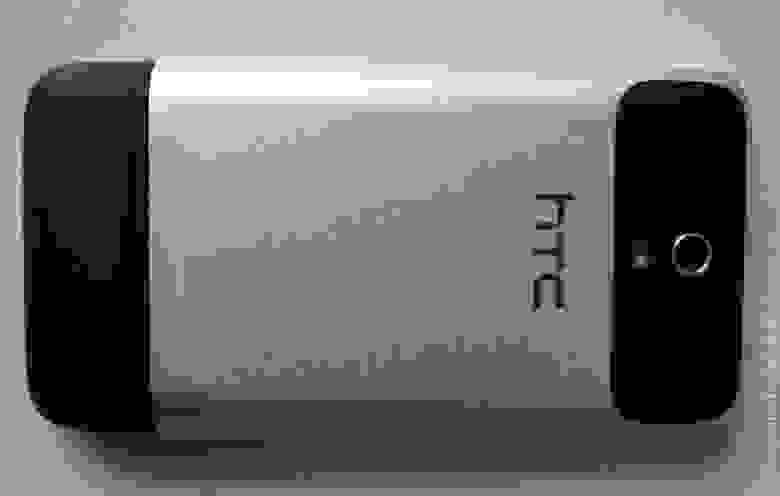
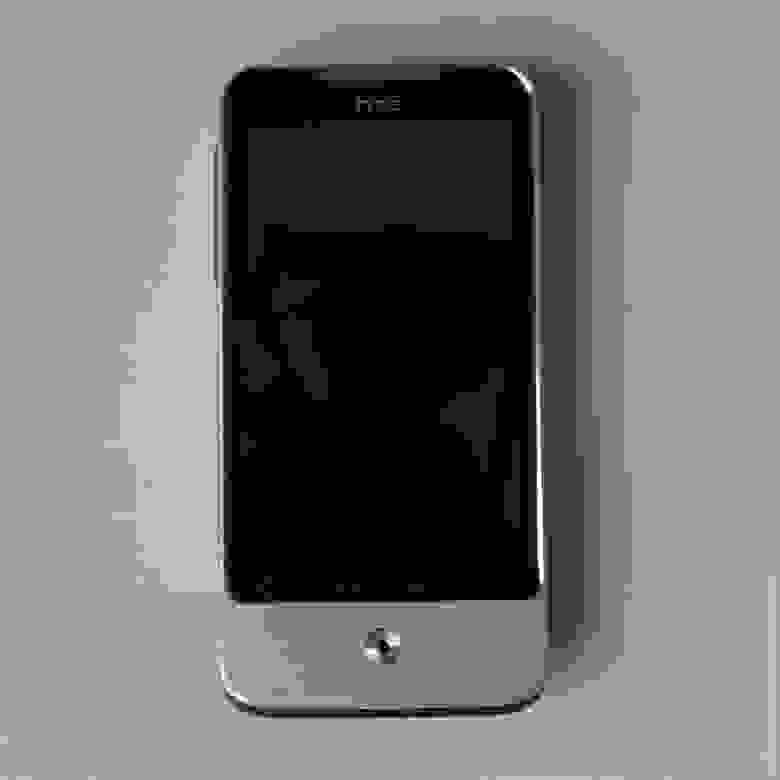
Samsung Galaxy S
Samsung Galaxy S выпустили в июне 2010 года, и всего за два месяца продали 800 тысяч устройств — абсолютный рекорд на тот момент для Android-смартфонов. Устройство получило 4-дюймовый AMOLED экран 480х800 точек, процессор ARM Cortex A8 1 ГГц, 512 МБ оперативной памяти и от 2 до 16 ГБ встроенной с поддержкой карт памяти до 32 ГБ. Это один из первых смартфонов с поддержкой Bluetooth 3.0. Толщина устройства — 9,9 мм, он был одним из самых тонких смартфонов в классе. Камеры — 5 МП основная и 0,3 фронтальная.

iPhone 4
7 июня 2010 года Apple выпустила новый iPhone 4 с индустриальным дизайном. Полный любви и обожания обзор читайте здесь. Корпус сделан из двух кусков полированного укреплённого стекла и рамки из нержавеющей стали, которая вызывала проблемы с приёмом сигнала — причём их предсказали до того, как устройство поступило в продажу.

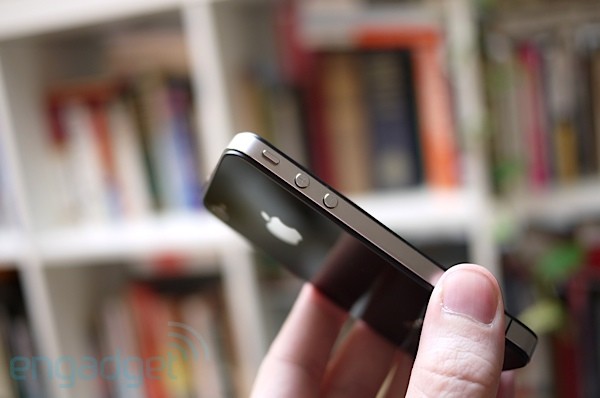
Официальный ответ Apple:
Если вы возьмете в руку любой мобильный телефон, это скажется на работе его антенны. Причём, в зависимости от расположения антенн, в некоторых местах корпуса это будет заметно сильнее. Это правда жизни для любого беспроводного телефона. Если вы когда-либо сталкивались с этим на вашем iPhone 4, избегайте обхватывания его за левый нижний таким образом, что ваша рука рука касается обоих частей металлического канта. Или попросту используйте один из многочисленных чехлов.
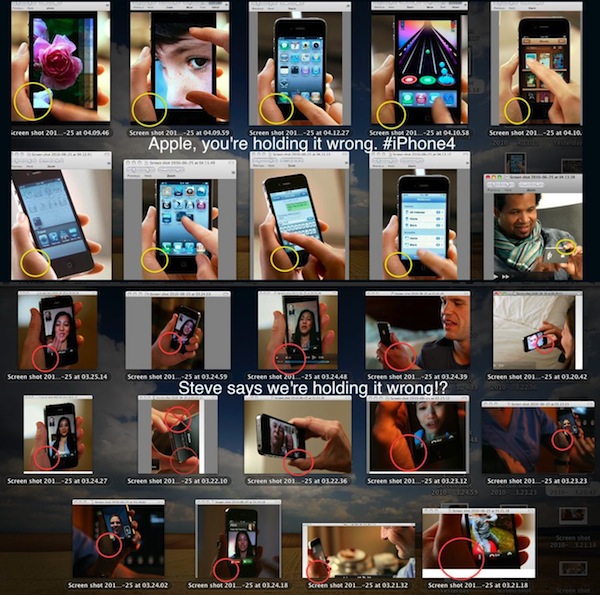
Прогноз IDC
IDC 7 сентября 2010 года публикует отчёт с прогнозом роста продаж смартфонов в 2010 года на 55% по сравнению с 2009. И говорит о том, что к 2014 год Android будет занимать 24,6% рынка смартфонов, Symbian — 32,9%, Blackberry — 17,3%, и iOS — 10,9%. У Windows Mobile будет 9,6%.

Если мы заглянем ненадолго в 2014 год, то мы увидим, как сильно ошибались аналитики IDC в 2010. Android занял 84,8% рынка, iOS — 11,6%, Windows Phone — 2,5%. А Blackberry досталось всего 0,5%.


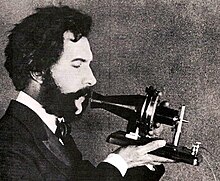
Actor portraying Alexander Graham Bell in a 1926 silent film. Shows Bell’s first telephone transmitter (microphone), invented 1876 and first displayed at the Centennial Exposition, Philadelphia.
This history of the telephone chronicles the development of the electrical telephone, and includes a brief overview of its predecessors. The first telephone patent was granted to Alexander Graham Bell in 1876.
Mechanical and acoustic devices[edit]

A 19th century acoustic tin can or «lovers’ telephone»
Before the invention of electromagnetic telephones, mechanical acoustic devices existed for transmitting speech and music over a greater distance. This distance was greater than that of normal direct speech. The earliest mechanical telephones were based on sound transmission through pipes or other physical media.[1] The acoustic tin can telephone, or «lovers’ phone», has been known for centuries.[1] It connects two diaphragms with a taut string or wire, which transmits sound by mechanical vibrations from one to the other along the wire (and not by a modulated electric current). The classic example is the children’s toy made by connecting the bottoms of two paper cups, metal cans, or plastic bottles with tautly held string.[1][2]
Some of the earliest known experiments were conducted by the British physicist and polymath, Robert Hooke, from 1664 to 1685.[1][3] An acoustic string phone made in 1667 has been attributed to him.[4] An early version was also found in use by the Chimu in Peru. The gourd and stretched-hide version resides in the Smithsonian Museum collection and dates back to around the 7th century AD.[5]
For a few years in the late 1800s, acoustic telephones were marketed commercially as a competitor to the electrical telephone. When the Bell telephone patents expired and many new telephone manufacturers began competing, acoustic telephone makers quickly went out of business. Their maximum range was very limited.[2] An example of one such company was the Pulsion Telephone Supply Company created by Lemuel Mellett in Massachusetts, which designed its version in 1888 and deployed it on railroad right-of-ways.
Additionally, speaking tubes have long been common, especially within buildings and aboard ships, and they are still in use today.[6]
Electrical devices[edit]
The telephone emerged from the making and successive improvements of the electrical telegraph. In 1804, Spanish polymath and scientist Francisco Salva Campillo constructed an electrochemical telegraph.[7] The first working telegraph was built by the English inventor Francis Ronalds in 1816 and used static electricity.[8] An electromagnetic telegraph was created by Baron Schilling in 1832. Carl Friedrich Gauss and Wilhelm Weber built another electromagnetic telegraph in 1833 in Göttingen. At the University of Gottingen, the two had been working together in the field of magnetism. They built the first telegraph to connect the observatory and the Institute of physics, which was able to send eight words per minute.[9]

Bell prototype telephone stamp
Centennial Issue of 1976
The electrical telegraph was first commercialized by Sir William Fothergill Cooke and entered use on the Great Western Railway in England. It ran for 13 mi (21 km) from Paddington station to West Drayton and came into operation on April 9, 1839.
Another electrical telegraph was independently developed and patented in the United States in 1837 by Samuel Morse. His assistant, Alfred Vail, developed the Morse code signaling alphabet with Morse. America’s first telegraph was sent by Morse on January 6, 1838, across 2 miles (3 km) of wiring.
Invention of the telephone[edit]
Credit for the invention of the electric telephone is frequently disputed, and new controversies over the issue have arisen from time to time. Antonio Meucci, Alexander Graham Bell, and Elisha Gray amongst others, have all been credited with the telephone’s invention. The early history of the telephone became and still remains a confusing morass of claims and counterclaims, which were not clarified by the huge number of lawsuits filed in order to resolve the patent claims of the many individuals and commercial competitors. The Bell and Edison patents, however, were commercially decisive, because they dominated telephone technology and were upheld by court decisions in the United States.
-

Philipp Reis, 1861, constructed the first telephone, today called the Reis telephone.
-


The master telephone patent granted to Bell, 174465, March 10, 1876
The modern telephone is the result of the work of many people.[10] Alexander Graham Bell was, however, the first to patent the telephone, as an «apparatus for transmitting vocal or other sounds telegraphically». Bell has most often been credited as the inventor of the first practical telephone. Johann Philipp Reis coined the term «telephon».[11] Models of it were sent abroad, to London, Dublin, Tiflis, and other places. It became a subject for popular lectures, and an article for scientific cabinets. Edison credited him as the «first inventor of the telephone.»[12]
The Italian-American inventor and businessman Antonio Meucci has been recognized by the U.S. House of Representatives for his contributory work on the telephone.[13] Several other controversies also surround the question of priority of invention for the telephone.
The Elisha Gray and Alexander Bell telephone controversy considers the question of whether Bell and Gray invented the telephone independently and, if not, whether Bell stole the invention from Gray. This controversy is narrower than the broader question of who deserves credit for inventing the telephone, for which there are several claimants.
The Canadian Parliamentary Motion on Alexander Graham Bell article reviews the controversial June 2002 United States House of Representatives resolution recognizing Meucci’s contributions ‘in’ the invention of the telephone (not ‘for’ the invention of the telephone). The same resolution was not passed in the U.S. Senate, thus labeling the House resolution as «political rhetoric». A subsequent counter-motion was unanimously passed in Canada’s Parliament 10 days later which declared Bell its inventor. This webpage examines critical aspects of both the parliamentary motion and the congressional resolution.
Telephone exchange[edit]
The main users of the electrical telegraph were post offices, railway stations, the more important governmental centers (ministries), stock exchanges, very few nationally distributed newspapers, the largest internationally important corporations, and wealthy individuals.[14]
Telegraph exchanges worked mainly on a store and forward basis. Although telephones devices were in use before the invention of the telephone exchange, their success and economical operation would have been impossible with the schema and structure of the contemporary telegraph systems.
Prior to the invention of the telephone switchboard, pairs of telephones were connected directly with each other, which was primarily useful for connecting a home to the owner’s business (They practically functioned as a primitive intercom).[15] A telephone exchange provides telephone service for a small area. Either manually by operators, or automatically by machine switching equipment, it interconnects individual subscriber lines for calls made between them. This made it possible for subscribers to call each other at homes, businesses, or public spaces. These made telephones an available and comfortable communication tool for many purposes, and it gave the impetus for the creation of a new industrial sector.
The telephone exchange was an idea of the Hungarian engineer Tivadar Puskás (1844–1893) in 1876, while he was working for Thomas Edison on a telegraph exchange.[16][17][18][19][20] The first commercial telephone exchange was opened at New Haven, Connecticut, with 21 subscribers on 28 January 1878,[21] in a storefront of the Boardman Building in New Haven, Connecticut. George W. Coy designed and built the world’s first switchboard for commercial use. Coy was inspired by Alexander Graham Bell’s lecture at the Skiff Opera House in New Haven on 27 April 1877.[21]
In Bell’s lecture, during which a three-way telephone connection with Hartford and Middletown, Connecticut, was demonstrated, he first discussed the idea of a telephone exchange for the conduct of business and trade. On 3 November 1877, Coy applied for and received a franchise from the Bell Telephone Company for New Haven and Middlesex Counties. Coy, along with Herrick P. Frost and Walter Lewis, who provided the capital, established the District Telephone Company of New Haven on 15 January 1878.[21]
The switchboard built by Coy was, according to one source, constructed of «carriage bolts, handles from teapot lids and bustle wire.» According to the company records, all the furnishings of the office, including the switchboard, were worth less than forty dollars. While the switchboard could connect as many as sixty-four customers, only two conversations could be handled simultaneously and six connections had to be made for each call.[21]
The District Telephone Company of New Haven went into operation with only twenty-one subscribers, who paid $1.50 per month. By 21 February 1878, however, when the first telephone directory was published by the company, fifty subscribers were listed. Most of these were businesses and listings such as physicians, the police, and the post office; only eleven residences were listed, four of which were for persons associated with the company.[21]
The New Haven District Telephone Company grew quickly and was reorganized several times in its first years. By 1880, the company had the right from the Bell Telephone Company to service all of Connecticut and western Massachusetts. As it expanded, the company was first renamed Connecticut Telephone, and then Southern New England Telephone in 1882.[21] The site of the first telephone exchange was granted a designation as a National Historic Landmark on 23 April 1965. However it was withdrawn in 1973 in order to demolish the building and construct a parking garage.[21]
Early telephone developments[edit]
The following is a brief summary of the history of the development of the telephone:
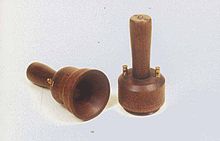

- Early 7th century AD — Chimu culture in Peru invents a string telephone using gourds and stretched hide. The original artifact is in the Smithsonian’s National Museum of the American Indian storage facility in Suitland, Maryland.
- 1667: Robert Hooke invents a string telephone that conveys sounds over an extended wire by mechanical vibrations. It was to be termed an ‘acoustic’ or ‘mechanical’ (non-electrical) telephone.
- 1753: Charles Morrison proposes the idea that electricity can be used to transmit messages, by using different wires for each letter.[22]
- 1844: Innocenzo Manzetti first moots the idea of a «speaking telegraph» (telephone).
- 1854: Charles Bourseul writes a memorandum on the principles of the telephone. (See the article: «Transmission électrique de la parole», L’Illustration, Paris, 26 August 1854.)
- 1854: Antonio Meucci demonstrates an electric voice-operated device in New York; exactly what kind of device he demonstrates is unknown.
- 1861: Philipp Reis constructs the first speech-transmitting telephone
- 28 December 1871: Antonio Meucci files a patent caveat (No. 3353, a notice of intent to invent, but not a formal patent application) at the U.S. Patent Office for a device he names a «Sound Telegraph».[23]
- 1872: Elisha Gray establishes Western Electric Manufacturing Company.
- 1 July 1875: Bell uses a bi-directional «gallows» telephone that is able to transmit «voicelike sounds», but not clear speech. Both the transmitter and the receiver are identical membrane electromagnet instruments.
- 1875: Thomas Edison experiments with acoustic telegraphy and in November builds an electro-dynamic receiver, but does not exploit it.
- 1875: Hungarian Tivadar Puskás (the inventor of the telephone exchange) arrives in the USA.
- 6 April 1875: Bell’s U.S. Patent 161,739 «Transmitters and Receivers for Electric Telegraphs» is granted. This uses multiple vibrating steel reeds in make-break circuits, and the concept of multiplexed frequencies.
- 20 January 1876: Bell signs and notarizes his patent application for the telephone.
- 11 February 1876: Elisha Gray designs a liquid transmitter for use with a telephone, but does not build one.
- 7 March 1876: Bell’s U.S. patent No. 174,465 for the telephone is granted.
- 10 March 1876: Bell transmits the sentence: «Mr. Watson, come here! I want to see you!» using a liquid transmitter and an electromagnetic receiver.
- 10 August 1876: Using the telegraph line between Brantford and Paris, Ontario, eight miles (thirteen kilometres) distant, Bell makes a telephone call, said by some to be the «world’s first long-distance call».[24]
- 30 January 1877: Bell’s U.S. patent No. 186,787 is granted for an electromagnetic telephone using permanent magnets, iron diaphragms, and a call bell.
- 27 April 1877: Edison files for a patent on a carbon (graphite) transmitter. Patent No. 474,230 is granted on 3 May 1892, after a 15-year delay because of litigation. Edison is later granted patent No. 222,390 for a carbon granules transmitter in 1879.
- 6 October 1877: Scientific American publishes the invention from Bell—at that time still without a ringer.
- 25 October 1877: the article in Scientific American is discussed at the Telegraphenamt in Berlin
- 12 November 1877: The first commercial telephone company enters telephone business in Friedrichsberg close to Berlin[25] using the Siemens pipe as ringer and telephone devices built by Siemens.
- 1877: The first experimental Telephone Exchange is established in Boston.
- 1877: First long-distance telephone line
- 1877: Emile Berliner invents the telephone transmitter.
- 14 January 1878: Bell demonstrates the telephone to Queen Victoria and makes the first publicly-witnessed long-distance calls in the UK. The queen tries the device and finds it to be «quite extraordinary».[26]
- 26 January 1878: The first permanent telephone connection in the UK is made between two businesses in Manchester
- 28 January 1878: The first commercial US telephone exchange opens in New Haven, Connecticut.
- 15 June 1878: The first commercial toll line enters operation, connecting Springfield and Holyoke, Massachusetts[27]
- 1887: Tivadar Puskás introduces the multiplex switchboard, that has an epochal significance in the further development of telephone exchanges.[28]
- 1915: The first U.S. coast-to-coast long-distance telephone call, is ceremonially inaugurated by A.G. Bell in New York City and his former assistant Thomas Augustus Watson in San Francisco, California.
- 1927: The first transatlantic phone call is made, from the United States to the United Kingdom.[29]
Early commercial instruments[edit]

1917 wall telephone, open to show magneto and local battery
Early telephones were technically diverse. Some of them used liquid transmitters which soon went out of use. Others were dynamic: their diaphragms vibrated a coil of wire in the field of a permanent magnet or vice versa. Such sound-powered telephones survived in small numbers through the 20th century in military and maritime applications where the ability to create its own electrical power was crucial. Most, however, used Edison/Berliner carbon transmitters, which were much louder than the other kinds, even though they required induction coils, actually acting as impedance matching transformers to make it compatible to the line impedance. The Edison patents kept the Bell monopoly viable into the 20th century, by which time telephone networks were more important than the instrument.
Early telephones were locally powered by a dynamic transmitter. One of the jobs of outside plant personnel was to visit each telephone periodically to inspect the battery. During the 20th century, the «common battery» operation came to dominate, and was powered by the «talk battery» from the telephone exchange over the same wires that carried the voice signals. Late in the century, wireless handsets brought a revival of local battery power.
The earliest telephones had only one wire for transmitting and receiving of audio, and used a ground return path. The earliest dynamic telephones also had only one opening for sound, and the user listened and spoke into the same hole. Sometimes the instruments were operated in pairs at each end, making conversation more convenient but also more expensive.

Historical marker commemorating the first telephone central office in New York State (1878)
At first, telephones were leased in pairs to the subscriber, for example one for his home and one for his shop, and the subscriber had to arrange with telegraph contractors to construct a line between them. Users who wanted the ability to speak to three or four different shops, suppliers etc. would obtain and set up three or four pairs of telephones. Western Union, already using telegraph exchanges, quickly extended the principle to its telephones in New York City and San Francisco, and Bell was not slow in appreciating the potential.
Signaling began in an appropriately primitive manner. The user alerted the other end, or the exchange operator, by whistling into the transmitter. Exchange operation soon resulted in telephones being equipped with a bell, first operated over a second wire and later with the same wire using a condenser. Telephones connected to the earliest Strowger automatic exchanges had seven wires, one for the knife switch, one for each telegraph key, one for the bell, one for the push button and two for speaking.
Rural and other telephones that were not on a common battery exchange had hand cranked «magneto» generators to produce an alternating current to ring the bells of other telephones on the line and to alert the exchange operator.
In 1877 and 1878, Edison invented and developed the carbon microphone used in all telephones along with the Bell receiver until the 1980s. After protracted patent litigation, a federal court ruled in 1892 that Edison and not Emile Berliner was the inventor of the carbon microphone. The carbon microphone was also used in radio broadcasting and public address work through the 1920s.
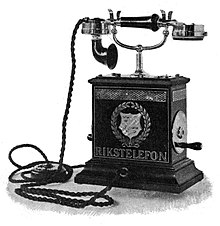
In the 1890s a new smaller style of telephone was introduced, the candlestick telephone, and it was packaged in three parts. The transmitter stood on a stand, known as a «candlestick» for its shape. When not in use, the receiver hung on a hook with a switch in it, known as a «switchhook.» Previous telephones required the user to operate a separate switch to connect either the voice or the bell. With the new kind, the user was less likely to leave the phone «off the hook». In phones connected to magneto exchanges, the bell, induction coil, battery, and magneto were in a separate bell box called a «ringer box.» In phones connected to common battery exchanges, the ringer box was installed under a desk, or other out of the way place, since it did not need a battery or magneto.
Cradle designs were also used at this time, with a handle with the receiver and transmitter attached, separate from the cradle base that housed the magneto crank and other parts. They were larger than the «candlestick» and more popular.
Disadvantages of single-wire operation, such as crosstalk and hum from nearby AC power wires, had already led to the use of twisted pairs and, for long-distance telephones, four-wire circuits. Users at the beginning of the 20th century did not place long-distance calls from their own telephones but made an appointment to use a special sound-proofed long-distance telephone booth furnished with the latest technology.
Around 1893, the country leading the world in telephones per 100 persons—known as teledensity—was Sweden with 0.55 in the whole country but 4 in Stockholm (10,000 out of a total of 27,658 subscribers).[30] This compares with 0.4 in the US for that year.[31] Telephone service in Sweden developed through a variety of institutional forms: the International Bell Telephone Company (a U.S. multinational), town and village co-operatives, the General Telephone Company of Stockholm (a Swedish private company), and the Swedish Telegraph Department (part of the Swedish government). Since Stockholm consists of islands, telephone service offered relatively large advantages, but had to use submarine cables extensively. Competition between Bell Telephone and General Telephone, and later between General Telephone and the Swedish Telegraph Dept., was intense.
In 1893, the U.S. was considerably behind Sweden, New Zealand, Switzerland, and Norway in teledensity. The U.S. became the world leadership in teledensity with the rise of many independent telephone companies after the Bell patents expired in 1893 and 1894.
20th-century developments[edit]
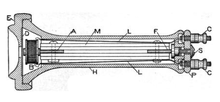
Old Receiver schematic, c.1906


Top of cellular telephone tower
By 1904, over three million phones in the U.S.[32] were connected by manual switchboard exchanges. By 1914, the U.S. was the world leader in telephone density and had more than twice the teledensity of Sweden, New Zealand, Switzerland, and Norway. The relatively good performance of the U.S. occurred despite competing telephone networks not interconnecting.[33] On January 7, 1927, W. S. Gifford, president of the American Telephone & Telegraph Company, called Evelyn P. Murray to test the first commercial telephone line across the Atlantic Ocean.[29]
What turned out to be the most popular and longest-lasting physical style of telephone was introduced in the early 20th century, including Bell’s model 102 telephone. A carbon granule transmitter and electromagnetic receiver were united in a single molded plastic handle, which when not in use were placed in a cradle in the base unit. The circuit diagram[34] of the model 102 shows the direct connection of the receiver to the line, while the transmitter was induction coupled, with energy supplied by a local battery. The coupling transformer, battery, and ringer were in a separate enclosure from the desk set. The rotary dial in the base interrupted the line current by repeatedly but very briefly disconnecting the line 1 to 10 times for each digit, and the hook switch (in the center of the circuit diagram) permanently disconnected the line and the transmitter battery while the handset was on the cradle.
Starting in the 1930s, the base of the telephone also enclosed its bell and induction coil, obviating the need for a separate ringer box. Power was supplied to each subscriber line by central-office batteries instead of the user’s local battery, which required periodic service. For the next half century, the network behind the telephone grew progressively larger and much more efficient, and, after the rotary dial was added, the instrument itself changed little until Touch-Tone signaling started replacing the rotary dial in the 1960s.
The history of mobile phones can be traced back to two-way radios permanently installed in vehicles such as taxicabs, police cruisers, railroad trains, and the like. Later versions such as the so-called transportables or «bag phones» were equipped with a cigarette-lighter plug so that they could also be carried, and thus could be used as either mobile two-way radios or as portable phones by being patched into the telephone network.
In December 1947, Bell Labs engineers Douglas H. Ring and W. Rae Young proposed hexagonal cell transmissions for mobile phones.[35] Philip T. Porter, also of Bell Labs, proposed that the cell towers be at the corners of the hexagons rather than the centers and have directional antennas that would transmit/receive in 3 directions (see picture at right) into 3 adjacent hexagon cells.[36][37] The technology did not exist then and the radio frequencies had not yet been allocated. Cellular technology was undeveloped until the 1960s, when Richard H. Frenkiel and Joel S. Engel of Bell Labs developed the electronics.
Meanwhile, the 1956 inauguration of the TAT-1 cable and later international direct dialing were important steps in putting together the various continental telephone networks into a global network.
On 3 April 1973, Motorola manager Martin Cooper placed a cellular-phone call (in front of reporters) to Dr. Joel S. Engel, head of research at AT&T’s Bell Labs. This began the era of the handheld cellular-mobile phone.
Cable-television companies began to use their fast-developing cable networks with ducting under the streets of the United Kingdom in the late 1980s to provide telephony services in association with major telephone companies. One of the early cable operators in the UK, Cable London, connected its first cable telephone customer in about 1990.
Digital telephone technology[edit]
The rapid development and wide adoption of pulse-code modulation (PCM) digital telephony was enabled by metal–oxide–semiconductor (MOS) technology.[38] The MOS field-effect transistor (MOSFET) was invented by Mohamed M. Atalla and Dawon Kahng at Bell Telephone Laboratories in 1959, and the MOS integrated circuit (MOS IC) chip was proposed soon after, but MOS technology was initially overlooked by Bell because they did not find it practical for analog telephone applications, before it was commercialized by Fairchild and RCA for digital electronics such as computers.[39][38] MOS technology eventually became practical for telephone applications with the MOS mixed-signal integrated circuit, which combines analog and digital signal processing on a single chip, developed by former Bell engineer David A. Hodges with Paul R. Gray at UC Berkeley in the early 1970s.[38] In 1974, Hodges and Gray worked with R.E. Suarez to develop MOS switched capacitor (SC) circuit technology, which they used to develop the digital-to-analog converter (DAC) chip, using MOSFETs and MOS capacitors for data conversion. This was followed by the analog-to-digital converter (ADC) chip, developed by Gray and J. McCreary in 1975.[38]
MOS SC circuits led to the development of PCM codec-filter chips in the late 1970s.[38][40] The silicon-gate CMOS (complementary MOS) PCM codec-filter chip, developed by Hodges and W.C. Black in 1980,[38] has since been the industry standard for digital telephony.[38][40] By the 1990s, telecommunication networks such as the public switched telephone network (PSTN) had been largely digitized with very-large-scale integration (VLSI) CMOS PCM codec-filters, widely used in switching systems for telephone exchanges, private branch exchanges (PBX) and key telephone systems (KTS); user-end modems; data transmission applications such as digital loop carriers, pair gain multiplexers, telephone loop extenders, integrated services digital network (ISDN) terminals, digital cordless telephones and digital cell phones; and applications such as speech recognition equipment, voice data storage, voice mail and digital tapeless answering machines.[40] The bandwidth of digital telecommunication networks has been rapidly increasing at an exponential rate, as observed by Edholm’s law,[41] largely driven by the rapid scaling and miniaturization of MOS technology.[42][38]
The British companies Pye TMC, Marconi-Elliott and GEC developed the digital push-button telephone, based on MOS IC technology, in 1970. It was variously called the «MOS telephone», the «push-button telephone chip», and the «telephone on a chip». It used MOS IC logic, with thousands of MOSFETs on a chip, to convert the keypad input into a pulse signal. This made it possible for push-button telephones to be used with pulse dialing at most telephone exchanges.[43][44] MOS telephone technology introduced a new feature: the use of MOS memory chips to store phone numbers, which could then be used for speed dialing at the push of a button.[43][44][45] This was demonstrated in the United Kingdom by Pye TMC, Marcno-Elliot and GEC in 1970.[43][44] Between 1971 and 1973, Bell combined MOS technology with touch-tone technology to develop a push-button MOS touch-tone phone called the «Touch-O-Matic» telephone, which could store up to 32 phone numbers. This was made possible by the low cost, low power requirements, small size and high reliability of MOSFETs, over 15,000 of which were contained on ten MOS IC chips, including one chip for logic, one for the keypad dial interface, and eight for memory.[46]
Women’s usage in the 20th century[edit]

Private conversation, 1910
The telephone was instrumental to modernization. It aided in the development of suburbs and the separation of homes and businesses, but also became a reason for the separation between women occupying the private sphere and men in the public sphere.[47] Both historically and currently, women are predominantly responsible for the telephone calls that bridge the public and private sphere, such as calls regarding doctor’s appointments and meetings.[48]
21st-century developments[edit]
Internet Protocol (IP) telephony, also known as Internet telephony or Voice over Internet Protocol (VoIP), is a disruptive technology that is rapidly gaining ground against traditional telephone network technologies.

Modern Apple Iphone. This phone is considered a smartphone
IP telephony uses a broadband Internet service to transmit conversations as data packets. In addition to replacing the traditional plain old telephone service (POTS) systems, IP telephony competes with mobile phone networks by offering free or lower cost service via WiFi hotspots. VoIP is also used on private wireless networks which may or may not have a connection to the outside telephone network.
Telecommunication of the 21st century has been dominated by the development of the smartphone. This is a combination of a hand-held computer, a cellular phone, a digital camera, and Internet access. One of its features is the touch screen that facilitates the primary interaction for users for most tasks, such as dialing telephone numbers. Some of its software features also include email communication, as well as audio and video playback and capture.
See also[edit]
- Bell Telephone Memorial, a major monument dedicated to the invention of the telephone
- Carbon microphone
- Charles Bourseul – claimed inventor of the telephone
- Elisha Gray
- Elisha Gray and Alexander Bell telephone controversy
- History of mobile phones
- History of telecommunication
- History of videotelephony
- Innocenzo Manzetti
- Invention of the telephone
- Johann Philipp Reis – claimed inventor of the telephone
- Antonio Meucci – claimed inventor of the telephone
- Private branch exchange
- Push-button telephone
- Telephone exchange
- The Telephone Cases, a series of court decisions in the U.S. on the telephone’s invention
- Thomas Edison’s carbon telephone transmitter – greatly improved the telephone’s sound quality
- Timeline of the telephone
References[edit]
- ^ a b c d McVeigh, Daniel P.
An Early History of the Telephone: 1664-1866: Robert Hooke’s Acoustic Experiments and Silent Inventions Archived 24 May 2014 at the Wayback Machine, Columbia University website. Retrieved 15 January 2013. This work in turn cites:- Richard Waller and edited by R.T. Gunther. «The Postthumous Works of Robert Hooke, M.D., S.R.S. 1705.» Reprinted in R.T. Gunther’s «Early Science In Oxford», Vol. 6, p. 185, 25
- ^ a b Jacobs, Bill. Acoustic Telephones, TelefoonMuseum.com website. Retrieved 15 January 2013. This article in turn cites:
- Kolger, Jon. «Mechanical or String Telephones», ATCA Newsletter, June 1986; and
- «Lancaster, Pennsylvania Agricultural Almanac for the Year 1879: How to Construct a Farmer’s Telephone», John Bater’s Sons.; and
- «Telephone Experiences of Harry J. Curl as told by him to E. T. Mahood, During the summer of 1933 at Kansas City, Missouri: First Telephone Experience.»
- ^ Grigonis, Richard. x +jchdjn$hbdgdveudydcgeenterprise-fixed-communications/articles/47924-telephone-1665.htm A Telephone can 1665?[permanent dead link], TMCNet Technews website, 29 December 2008.
- ^ Giles, Arthur (editor). County Directory of Scotland (for 1901-1904): Twelfth Issue: Telephone (Scottish Post Office Directories), Edinburgh: R. Grant & Son, 1902, p. 28.
- ^ Baldwin, Neil. «There’s a 1,200-year-old Phone in the Smithsonian Collections». smithsonianmag.com. Smithsonian Museum. Retrieved 20 August 2022.
- ^ «Voicepipes and Speaking-Tubes». The Museum of Retro-Technology. 15 March 2010. Retrieved 17 October 2012.
- ^ Jones, R. Victor S Archived 11 October 2012 at the Wayback Machine d» Electrochemical Telegraph (1808-10)], Harvard University website. Attributed to «Semaphore to Satellite», International Telecommunication Union, Geneva 1965. Retrieved 2009-05-01
- ^ Ronalds, B.F. (2016). Sir Francis Ronalds: Father of the Electric Telegraph. London: Imperial College Press. ISBN 978-1-78326-917-4.
- ^ Hentschel, K. (March 1999). «Some Historical Points of Interest in Göttingen». Physics in Perspective. 1 (1): 110–117. Bibcode:1999PhP…..1..110H. doi:10.1007/s000160050009. ISSN 1422-6944. S2CID 119459958.
- ^ Lewis Coe (1995), «The Telephone and Its Several Inventors»
- ^ http://news.bbc.co.uk/2/hi/science/nature/3253174.stm
- ^ Edison, Thomas A. The Edison Papers, Digital Edition Rutgers University, accessed 26 March 2006. LB020312 TAEM 83:170
- ^ «H.Res.269 — Expressing the sense of the House of Representatives to honor the life and achievements of 19th-century Italian-American inventor Antonio Meucci, and his work in the invention of the telephone. 107th Congress (2001-2002)». U.S. House of Representatives. 11 June 2002. Retrieved 7 February 2014.
- ^ Private Telegraphs, The Sydney Morning Herald, credited to The Times, 19 April 1878, p. 6.
- ^ Bo Leuf (2002). Peer to Peer: Collaboration and Sharing Over the Internet. Addison-Wesley. p. 15. ISBN 9780201767322.
- ^ Alvin K. Benson (2010). Inventors and inventions Great lives from history Volume 4 of Great Lives from History: Inventors & Inventions. Salem Press. p. 1298. ISBN 9781587655227.
- ^ Puskás Tivadar (1844 — 1893) (short biography), Hungarian History website. Retrieved from Archive.org, February 2013.
- ^ «Puskás Tivadar (1844 — 1893)». Mszh.hu. Archived from the original on 8 October 2010. Retrieved 1 July 2012.
- ^ «Puskás, Tivadar». Omikk.bme.hu. Retrieved 1 July 2012.
- ^ «Welcome hunreal.com — BlueHost.com». Hunreal.com. Archived from the original on 16 March 2012. Retrieved 1 July 2012.
- ^ a b c d e f g
Withdrawal of National Historic Landmark Designation: Site of the First Telephone Exchange, New Haven, New Haven County, Connecticut, United States National Park Service, United States Department of the Interior, 13 April 2006.Archived 15 August 2012 at the Wayback Machine
- ^ «History Of The Invention Of Telephone». The Reverse Phone. 9 June 2011. Retrieved 22 April 2012.
- ^ «Antonio Meucci — Questions and Answers». Chezbasilio.org. Retrieved 30 August 2012.
- ^ «Alexander Graham Bell 1847-1922 Inventor of the Bell System». Telecommunications Canada. Retrieved 14 January 2020.
- ^ «Cdrtools (Cdrecord) release information».
- ^ «Alexander Graham Bell demonstrates the newly invented telephone». The Telegraph. 13 January 2017. Archived from the original on 12 January 2022. Retrieved 14 January 2020.
- ^ «Southern New England Telephone Company: The First Fifty Years, 1878-1928». Thomas J. Dodd Research Center. University of Connecticut. Archived from the original on 9 June 2008.
- ^ Francis S. Wagner: Hungarian Contributions to World Civilization – Page 68
- ^ a b «First Transatlantic Telephone Call». Retrieved 22 March 2019.
- ^
Bennett, Alfred Roslin (1895). Telephone Systems of the Continent of Europe. p. 337. Retrieved 14 June 2012. - ^
«Early U.S. Telephone Industry Data». Retrieved 15 June 2012. - ^ «AT&T: History: Origins». Corp.att.com. Archived from the original on 20 August 2012. Retrieved 30 August 2012.
- ^ «Leaders in the early spread of telephone service». Purplemotes.net. 21 March 2010.
- ^ «Fig I-102 Type Sidetone Hand Telephone Set Shown with 534Y Subscriber Set». Archived from the original on 16 June 2007. Retrieved 29 May 2007.
- ^ «1947 memo by Douglas H. Ring proposing hexagonal cells» (PDF). Archived from the original (PDF) on 7 February 2012. Retrieved 30 August 2012.
- ^ Farley, Tom; van der Hoek, Mark (1 January 2006). «Cellular Telephone Basics». PrivateLine. Archived from the original on 3 May 2012. Retrieved 22 April 2012.
- ^ interview of Joel S. Engel, page 17 (image 18) Archived 16 June 2007 at the Wayback Machine
- ^ a b c d e f g h Allstot, David J. (2016). «Switched Capacitor Filters». In Maloberti, Franco; Davies, Anthony C. (eds.). A Short History of Circuits and Systems: From Green, Mobile, Pervasive Networking to Big Data Computing (PDF). IEEE Circuits and Systems Society. pp. 105–110. ISBN 9788793609860.
- ^ Maloberti, Franco; Davies, Anthony C. (2016). «History of Electronic Devices». A Short History of Circuits and Systems: From Green, Mobile, Pervasive Networking to Big Data Computing (PDF). IEEE Circuits and Systems Society. pp. 59-70 (65-7). ISBN 9788793609860.
- ^ a b c Floyd, Michael D.; Hillman, Garth D. (8 October 2018) [1st pub. 2000]. «Pulse-Code Modulation Codec-Filters». The Communications Handbook (2nd ed.). CRC Press. pp. 26–1, 26–2, 26–3. ISBN 9781420041163.
- ^ Cherry, Steven (2004). «Edholm’s law of bandwidth». IEEE Spectrum. 41 (7): 58–60. doi:10.1109/MSPEC.2004.1309810. S2CID 27580722.
- ^ Jindal, Renuka P. (2009). «From millibits to terabits per second and beyond — Over 60 years of innovation». 2009 2nd International Workshop on Electron Devices and Semiconductor Technology: 1–6. doi:10.1109/EDST.2009.5166093. ISBN 978-1-4244-3831-0. S2CID 25112828.
- ^ a b c «Push-button telephone chips» (PDF). Wireless World: 383. August 1970.
- ^ a b c Valéry, Nicholas (11 April 1974). «Debut for the telephone on a chip». New Scientist. Reed Business Information. 62 (893): 65–7. ISSN 0262-4079.
- ^ Electronic Components. U.S. Government Printing Office. 1974. p. 23.
- ^ Gust, Victor; Huizinga, Donald; Paas, Terrance (January 1976). «Call anywhere at the touch of a button» (PDF). Bell Laboratories Record. 54: 3–8.
- ^ Kramarae, Cheris; Lana F. Rakow, eds. (1988). Technology and women’s voices : keeping in touch (1. publ. ed.). New York: Routledge & Kegan Paul. p. 209. ISBN 0710206798. Retrieved 9 February 2014.
- ^ Kramarae, Cheris; Lana F. Rakow, eds. (1988). Technology and women’s voices : keeping in touch (1. publ. ed.). New York: Routledge & Kegan Paul. p. 217. ISBN 978-0710206794.
- This article includes text from Withdrawal of National Historic Landmark Designation: Site of the First Telephone Exchange, New Haven, New Haven County, Connecticut, by the United States National Park Service, a work in the public domain.
Further reading[edit]
- Baker, Burton H. (2000), The Gray Matter: The Forgotten Story of the Telephone, Telepress, St. Joseph, MI, 2000. ISBN 0-615-11329-X
- Bruce, Robert V. (1990), Alexander Graham Bell and the Conquest of Solitude, Cornell University Press, Ithaca, 1990.
- Casson, Herbert N. (March 1910). «The Birth Of The Telephone: Its Invention Not An Accident But The Working Out Of A Scientific Theory». The World’s Work: A History of Our Time. XIX: 12669–12683. Retrieved 10 July 2009.
- Casson, Herbert N. (May 1910). «The Future Of The Telephone: The Dawn Of A New Era Of Expansion». The World’s Work: A History of Our Time. XX: 12903–12918. Retrieved 10 July 2009.
- Coe, Lewis (1995), The Telephone and Its Several Inventors: A History, McFarland, North Carolina, 1995. ISBN 0-7864-0138-9
- Evenson, A. Edward (2000), The Telephone Patent Conspiracy of 1876: The Elisha Gray — Alexander Bell Controversy, McFarland, North Carolina, 2000. ISBN 0-7864-0883-9
- Huurdeman, Anton A. (2003), The Worldwide History of Telecommunications, IEEE Press and J. Wiley & Sons, 2003. ISBN 0-471-20505-2
- John, Richard R (2010), Network Nation: Inventing American Telecommunications, Harvard University Press, 2010; traces the evolution of the country’s telegraph and telephone networks.
- Josephson, Matthew (1992), Edison: A Biography, Wiley, 1992. ISBN 0-471-54806-5
- Wheen, Andrew (2011), DOT-DASH TO DOT.COM: How Modern Telecommunications Evolved from the Telegraph to the Internet (Springer, 2011). ISBN 978-1-4419-6759-6
- Martin, Michèle (1988). «Feminisation of the Labour Process in the Communication Industry: The Case of the Telephone Operators, 1876-1904». Labour / Le Travail. 22: 139. doi:10.2307/25143030.
External links[edit]
- Silvanus P. Thompson — Philipp Reis: Inventor of the Telephone A Biographical Sketch, London, 1883
- Kempe, Harry Robert; Garcke, Emile (1911). «Telephone» . Encyclopædia Britannica. Vol. 26 (11th ed.). pp. 547–557.
- «Alexander Graham Bell (1847-1922)». Scottish Science Hall of Fame. National Library of Scotland. Retrieved 31 January 2014.
- History of the Telephone in Washington, DC — Ghosts of DC blog
- Jay L. Zagorsky (14 March 2019). «Rise and fall of the landline: 143 years of telephones becoming more accessible – and smart». The Conversation. Retrieved 3 April 2022.

Actor portraying Alexander Graham Bell in a 1926 silent film. Shows Bell’s first telephone transmitter (microphone), invented 1876 and first displayed at the Centennial Exposition, Philadelphia.
This history of the telephone chronicles the development of the electrical telephone, and includes a brief overview of its predecessors. The first telephone patent was granted to Alexander Graham Bell in 1876.
Mechanical and acoustic devices[edit]

A 19th century acoustic tin can or «lovers’ telephone»
Before the invention of electromagnetic telephones, mechanical acoustic devices existed for transmitting speech and music over a greater distance. This distance was greater than that of normal direct speech. The earliest mechanical telephones were based on sound transmission through pipes or other physical media.[1] The acoustic tin can telephone, or «lovers’ phone», has been known for centuries.[1] It connects two diaphragms with a taut string or wire, which transmits sound by mechanical vibrations from one to the other along the wire (and not by a modulated electric current). The classic example is the children’s toy made by connecting the bottoms of two paper cups, metal cans, or plastic bottles with tautly held string.[1][2]
Some of the earliest known experiments were conducted by the British physicist and polymath, Robert Hooke, from 1664 to 1685.[1][3] An acoustic string phone made in 1667 has been attributed to him.[4] An early version was also found in use by the Chimu in Peru. The gourd and stretched-hide version resides in the Smithsonian Museum collection and dates back to around the 7th century AD.[5]
For a few years in the late 1800s, acoustic telephones were marketed commercially as a competitor to the electrical telephone. When the Bell telephone patents expired and many new telephone manufacturers began competing, acoustic telephone makers quickly went out of business. Their maximum range was very limited.[2] An example of one such company was the Pulsion Telephone Supply Company created by Lemuel Mellett in Massachusetts, which designed its version in 1888 and deployed it on railroad right-of-ways.
Additionally, speaking tubes have long been common, especially within buildings and aboard ships, and they are still in use today.[6]
Electrical devices[edit]
The telephone emerged from the making and successive improvements of the electrical telegraph. In 1804, Spanish polymath and scientist Francisco Salva Campillo constructed an electrochemical telegraph.[7] The first working telegraph was built by the English inventor Francis Ronalds in 1816 and used static electricity.[8] An electromagnetic telegraph was created by Baron Schilling in 1832. Carl Friedrich Gauss and Wilhelm Weber built another electromagnetic telegraph in 1833 in Göttingen. At the University of Gottingen, the two had been working together in the field of magnetism. They built the first telegraph to connect the observatory and the Institute of physics, which was able to send eight words per minute.[9]

Bell prototype telephone stamp
Centennial Issue of 1976
The electrical telegraph was first commercialized by Sir William Fothergill Cooke and entered use on the Great Western Railway in England. It ran for 13 mi (21 km) from Paddington station to West Drayton and came into operation on April 9, 1839.
Another electrical telegraph was independently developed and patented in the United States in 1837 by Samuel Morse. His assistant, Alfred Vail, developed the Morse code signaling alphabet with Morse. America’s first telegraph was sent by Morse on January 6, 1838, across 2 miles (3 km) of wiring.
Invention of the telephone[edit]
Credit for the invention of the electric telephone is frequently disputed, and new controversies over the issue have arisen from time to time. Antonio Meucci, Alexander Graham Bell, and Elisha Gray amongst others, have all been credited with the telephone’s invention. The early history of the telephone became and still remains a confusing morass of claims and counterclaims, which were not clarified by the huge number of lawsuits filed in order to resolve the patent claims of the many individuals and commercial competitors. The Bell and Edison patents, however, were commercially decisive, because they dominated telephone technology and were upheld by court decisions in the United States.
-

Philipp Reis, 1861, constructed the first telephone, today called the Reis telephone.
-


The master telephone patent granted to Bell, 174465, March 10, 1876
The modern telephone is the result of the work of many people.[10] Alexander Graham Bell was, however, the first to patent the telephone, as an «apparatus for transmitting vocal or other sounds telegraphically». Bell has most often been credited as the inventor of the first practical telephone. Johann Philipp Reis coined the term «telephon».[11] Models of it were sent abroad, to London, Dublin, Tiflis, and other places. It became a subject for popular lectures, and an article for scientific cabinets. Edison credited him as the «first inventor of the telephone.»[12]
The Italian-American inventor and businessman Antonio Meucci has been recognized by the U.S. House of Representatives for his contributory work on the telephone.[13] Several other controversies also surround the question of priority of invention for the telephone.
The Elisha Gray and Alexander Bell telephone controversy considers the question of whether Bell and Gray invented the telephone independently and, if not, whether Bell stole the invention from Gray. This controversy is narrower than the broader question of who deserves credit for inventing the telephone, for which there are several claimants.
The Canadian Parliamentary Motion on Alexander Graham Bell article reviews the controversial June 2002 United States House of Representatives resolution recognizing Meucci’s contributions ‘in’ the invention of the telephone (not ‘for’ the invention of the telephone). The same resolution was not passed in the U.S. Senate, thus labeling the House resolution as «political rhetoric». A subsequent counter-motion was unanimously passed in Canada’s Parliament 10 days later which declared Bell its inventor. This webpage examines critical aspects of both the parliamentary motion and the congressional resolution.
Telephone exchange[edit]
The main users of the electrical telegraph were post offices, railway stations, the more important governmental centers (ministries), stock exchanges, very few nationally distributed newspapers, the largest internationally important corporations, and wealthy individuals.[14]
Telegraph exchanges worked mainly on a store and forward basis. Although telephones devices were in use before the invention of the telephone exchange, their success and economical operation would have been impossible with the schema and structure of the contemporary telegraph systems.
Prior to the invention of the telephone switchboard, pairs of telephones were connected directly with each other, which was primarily useful for connecting a home to the owner’s business (They practically functioned as a primitive intercom).[15] A telephone exchange provides telephone service for a small area. Either manually by operators, or automatically by machine switching equipment, it interconnects individual subscriber lines for calls made between them. This made it possible for subscribers to call each other at homes, businesses, or public spaces. These made telephones an available and comfortable communication tool for many purposes, and it gave the impetus for the creation of a new industrial sector.
The telephone exchange was an idea of the Hungarian engineer Tivadar Puskás (1844–1893) in 1876, while he was working for Thomas Edison on a telegraph exchange.[16][17][18][19][20] The first commercial telephone exchange was opened at New Haven, Connecticut, with 21 subscribers on 28 January 1878,[21] in a storefront of the Boardman Building in New Haven, Connecticut. George W. Coy designed and built the world’s first switchboard for commercial use. Coy was inspired by Alexander Graham Bell’s lecture at the Skiff Opera House in New Haven on 27 April 1877.[21]
In Bell’s lecture, during which a three-way telephone connection with Hartford and Middletown, Connecticut, was demonstrated, he first discussed the idea of a telephone exchange for the conduct of business and trade. On 3 November 1877, Coy applied for and received a franchise from the Bell Telephone Company for New Haven and Middlesex Counties. Coy, along with Herrick P. Frost and Walter Lewis, who provided the capital, established the District Telephone Company of New Haven on 15 January 1878.[21]
The switchboard built by Coy was, according to one source, constructed of «carriage bolts, handles from teapot lids and bustle wire.» According to the company records, all the furnishings of the office, including the switchboard, were worth less than forty dollars. While the switchboard could connect as many as sixty-four customers, only two conversations could be handled simultaneously and six connections had to be made for each call.[21]
The District Telephone Company of New Haven went into operation with only twenty-one subscribers, who paid $1.50 per month. By 21 February 1878, however, when the first telephone directory was published by the company, fifty subscribers were listed. Most of these were businesses and listings such as physicians, the police, and the post office; only eleven residences were listed, four of which were for persons associated with the company.[21]
The New Haven District Telephone Company grew quickly and was reorganized several times in its first years. By 1880, the company had the right from the Bell Telephone Company to service all of Connecticut and western Massachusetts. As it expanded, the company was first renamed Connecticut Telephone, and then Southern New England Telephone in 1882.[21] The site of the first telephone exchange was granted a designation as a National Historic Landmark on 23 April 1965. However it was withdrawn in 1973 in order to demolish the building and construct a parking garage.[21]
Early telephone developments[edit]
The following is a brief summary of the history of the development of the telephone:


- Early 7th century AD — Chimu culture in Peru invents a string telephone using gourds and stretched hide. The original artifact is in the Smithsonian’s National Museum of the American Indian storage facility in Suitland, Maryland.
- 1667: Robert Hooke invents a string telephone that conveys sounds over an extended wire by mechanical vibrations. It was to be termed an ‘acoustic’ or ‘mechanical’ (non-electrical) telephone.
- 1753: Charles Morrison proposes the idea that electricity can be used to transmit messages, by using different wires for each letter.[22]
- 1844: Innocenzo Manzetti first moots the idea of a «speaking telegraph» (telephone).
- 1854: Charles Bourseul writes a memorandum on the principles of the telephone. (See the article: «Transmission électrique de la parole», L’Illustration, Paris, 26 August 1854.)
- 1854: Antonio Meucci demonstrates an electric voice-operated device in New York; exactly what kind of device he demonstrates is unknown.
- 1861: Philipp Reis constructs the first speech-transmitting telephone
- 28 December 1871: Antonio Meucci files a patent caveat (No. 3353, a notice of intent to invent, but not a formal patent application) at the U.S. Patent Office for a device he names a «Sound Telegraph».[23]
- 1872: Elisha Gray establishes Western Electric Manufacturing Company.
- 1 July 1875: Bell uses a bi-directional «gallows» telephone that is able to transmit «voicelike sounds», but not clear speech. Both the transmitter and the receiver are identical membrane electromagnet instruments.
- 1875: Thomas Edison experiments with acoustic telegraphy and in November builds an electro-dynamic receiver, but does not exploit it.
- 1875: Hungarian Tivadar Puskás (the inventor of the telephone exchange) arrives in the USA.
- 6 April 1875: Bell’s U.S. Patent 161,739 «Transmitters and Receivers for Electric Telegraphs» is granted. This uses multiple vibrating steel reeds in make-break circuits, and the concept of multiplexed frequencies.
- 20 January 1876: Bell signs and notarizes his patent application for the telephone.
- 11 February 1876: Elisha Gray designs a liquid transmitter for use with a telephone, but does not build one.
- 7 March 1876: Bell’s U.S. patent No. 174,465 for the telephone is granted.
- 10 March 1876: Bell transmits the sentence: «Mr. Watson, come here! I want to see you!» using a liquid transmitter and an electromagnetic receiver.
- 10 August 1876: Using the telegraph line between Brantford and Paris, Ontario, eight miles (thirteen kilometres) distant, Bell makes a telephone call, said by some to be the «world’s first long-distance call».[24]
- 30 January 1877: Bell’s U.S. patent No. 186,787 is granted for an electromagnetic telephone using permanent magnets, iron diaphragms, and a call bell.
- 27 April 1877: Edison files for a patent on a carbon (graphite) transmitter. Patent No. 474,230 is granted on 3 May 1892, after a 15-year delay because of litigation. Edison is later granted patent No. 222,390 for a carbon granules transmitter in 1879.
- 6 October 1877: Scientific American publishes the invention from Bell—at that time still without a ringer.
- 25 October 1877: the article in Scientific American is discussed at the Telegraphenamt in Berlin
- 12 November 1877: The first commercial telephone company enters telephone business in Friedrichsberg close to Berlin[25] using the Siemens pipe as ringer and telephone devices built by Siemens.
- 1877: The first experimental Telephone Exchange is established in Boston.
- 1877: First long-distance telephone line
- 1877: Emile Berliner invents the telephone transmitter.
- 14 January 1878: Bell demonstrates the telephone to Queen Victoria and makes the first publicly-witnessed long-distance calls in the UK. The queen tries the device and finds it to be «quite extraordinary».[26]
- 26 January 1878: The first permanent telephone connection in the UK is made between two businesses in Manchester
- 28 January 1878: The first commercial US telephone exchange opens in New Haven, Connecticut.
- 15 June 1878: The first commercial toll line enters operation, connecting Springfield and Holyoke, Massachusetts[27]
- 1887: Tivadar Puskás introduces the multiplex switchboard, that has an epochal significance in the further development of telephone exchanges.[28]
- 1915: The first U.S. coast-to-coast long-distance telephone call, is ceremonially inaugurated by A.G. Bell in New York City and his former assistant Thomas Augustus Watson in San Francisco, California.
- 1927: The first transatlantic phone call is made, from the United States to the United Kingdom.[29]
Early commercial instruments[edit]

1917 wall telephone, open to show magneto and local battery
Early telephones were technically diverse. Some of them used liquid transmitters which soon went out of use. Others were dynamic: their diaphragms vibrated a coil of wire in the field of a permanent magnet or vice versa. Such sound-powered telephones survived in small numbers through the 20th century in military and maritime applications where the ability to create its own electrical power was crucial. Most, however, used Edison/Berliner carbon transmitters, which were much louder than the other kinds, even though they required induction coils, actually acting as impedance matching transformers to make it compatible to the line impedance. The Edison patents kept the Bell monopoly viable into the 20th century, by which time telephone networks were more important than the instrument.
Early telephones were locally powered by a dynamic transmitter. One of the jobs of outside plant personnel was to visit each telephone periodically to inspect the battery. During the 20th century, the «common battery» operation came to dominate, and was powered by the «talk battery» from the telephone exchange over the same wires that carried the voice signals. Late in the century, wireless handsets brought a revival of local battery power.
The earliest telephones had only one wire for transmitting and receiving of audio, and used a ground return path. The earliest dynamic telephones also had only one opening for sound, and the user listened and spoke into the same hole. Sometimes the instruments were operated in pairs at each end, making conversation more convenient but also more expensive.

Historical marker commemorating the first telephone central office in New York State (1878)
At first, telephones were leased in pairs to the subscriber, for example one for his home and one for his shop, and the subscriber had to arrange with telegraph contractors to construct a line between them. Users who wanted the ability to speak to three or four different shops, suppliers etc. would obtain and set up three or four pairs of telephones. Western Union, already using telegraph exchanges, quickly extended the principle to its telephones in New York City and San Francisco, and Bell was not slow in appreciating the potential.
Signaling began in an appropriately primitive manner. The user alerted the other end, or the exchange operator, by whistling into the transmitter. Exchange operation soon resulted in telephones being equipped with a bell, first operated over a second wire and later with the same wire using a condenser. Telephones connected to the earliest Strowger automatic exchanges had seven wires, one for the knife switch, one for each telegraph key, one for the bell, one for the push button and two for speaking.
Rural and other telephones that were not on a common battery exchange had hand cranked «magneto» generators to produce an alternating current to ring the bells of other telephones on the line and to alert the exchange operator.
In 1877 and 1878, Edison invented and developed the carbon microphone used in all telephones along with the Bell receiver until the 1980s. After protracted patent litigation, a federal court ruled in 1892 that Edison and not Emile Berliner was the inventor of the carbon microphone. The carbon microphone was also used in radio broadcasting and public address work through the 1920s.

In the 1890s a new smaller style of telephone was introduced, the candlestick telephone, and it was packaged in three parts. The transmitter stood on a stand, known as a «candlestick» for its shape. When not in use, the receiver hung on a hook with a switch in it, known as a «switchhook.» Previous telephones required the user to operate a separate switch to connect either the voice or the bell. With the new kind, the user was less likely to leave the phone «off the hook». In phones connected to magneto exchanges, the bell, induction coil, battery, and magneto were in a separate bell box called a «ringer box.» In phones connected to common battery exchanges, the ringer box was installed under a desk, or other out of the way place, since it did not need a battery or magneto.
Cradle designs were also used at this time, with a handle with the receiver and transmitter attached, separate from the cradle base that housed the magneto crank and other parts. They were larger than the «candlestick» and more popular.
Disadvantages of single-wire operation, such as crosstalk and hum from nearby AC power wires, had already led to the use of twisted pairs and, for long-distance telephones, four-wire circuits. Users at the beginning of the 20th century did not place long-distance calls from their own telephones but made an appointment to use a special sound-proofed long-distance telephone booth furnished with the latest technology.
Around 1893, the country leading the world in telephones per 100 persons—known as teledensity—was Sweden with 0.55 in the whole country but 4 in Stockholm (10,000 out of a total of 27,658 subscribers).[30] This compares with 0.4 in the US for that year.[31] Telephone service in Sweden developed through a variety of institutional forms: the International Bell Telephone Company (a U.S. multinational), town and village co-operatives, the General Telephone Company of Stockholm (a Swedish private company), and the Swedish Telegraph Department (part of the Swedish government). Since Stockholm consists of islands, telephone service offered relatively large advantages, but had to use submarine cables extensively. Competition between Bell Telephone and General Telephone, and later between General Telephone and the Swedish Telegraph Dept., was intense.
In 1893, the U.S. was considerably behind Sweden, New Zealand, Switzerland, and Norway in teledensity. The U.S. became the world leadership in teledensity with the rise of many independent telephone companies after the Bell patents expired in 1893 and 1894.
20th-century developments[edit]

Old Receiver schematic, c.1906


Top of cellular telephone tower
By 1904, over three million phones in the U.S.[32] were connected by manual switchboard exchanges. By 1914, the U.S. was the world leader in telephone density and had more than twice the teledensity of Sweden, New Zealand, Switzerland, and Norway. The relatively good performance of the U.S. occurred despite competing telephone networks not interconnecting.[33] On January 7, 1927, W. S. Gifford, president of the American Telephone & Telegraph Company, called Evelyn P. Murray to test the first commercial telephone line across the Atlantic Ocean.[29]
What turned out to be the most popular and longest-lasting physical style of telephone was introduced in the early 20th century, including Bell’s model 102 telephone. A carbon granule transmitter and electromagnetic receiver were united in a single molded plastic handle, which when not in use were placed in a cradle in the base unit. The circuit diagram[34] of the model 102 shows the direct connection of the receiver to the line, while the transmitter was induction coupled, with energy supplied by a local battery. The coupling transformer, battery, and ringer were in a separate enclosure from the desk set. The rotary dial in the base interrupted the line current by repeatedly but very briefly disconnecting the line 1 to 10 times for each digit, and the hook switch (in the center of the circuit diagram) permanently disconnected the line and the transmitter battery while the handset was on the cradle.
Starting in the 1930s, the base of the telephone also enclosed its bell and induction coil, obviating the need for a separate ringer box. Power was supplied to each subscriber line by central-office batteries instead of the user’s local battery, which required periodic service. For the next half century, the network behind the telephone grew progressively larger and much more efficient, and, after the rotary dial was added, the instrument itself changed little until Touch-Tone signaling started replacing the rotary dial in the 1960s.
The history of mobile phones can be traced back to two-way radios permanently installed in vehicles such as taxicabs, police cruisers, railroad trains, and the like. Later versions such as the so-called transportables or «bag phones» were equipped with a cigarette-lighter plug so that they could also be carried, and thus could be used as either mobile two-way radios or as portable phones by being patched into the telephone network.
In December 1947, Bell Labs engineers Douglas H. Ring and W. Rae Young proposed hexagonal cell transmissions for mobile phones.[35] Philip T. Porter, also of Bell Labs, proposed that the cell towers be at the corners of the hexagons rather than the centers and have directional antennas that would transmit/receive in 3 directions (see picture at right) into 3 adjacent hexagon cells.[36][37] The technology did not exist then and the radio frequencies had not yet been allocated. Cellular technology was undeveloped until the 1960s, when Richard H. Frenkiel and Joel S. Engel of Bell Labs developed the electronics.
Meanwhile, the 1956 inauguration of the TAT-1 cable and later international direct dialing were important steps in putting together the various continental telephone networks into a global network.
On 3 April 1973, Motorola manager Martin Cooper placed a cellular-phone call (in front of reporters) to Dr. Joel S. Engel, head of research at AT&T’s Bell Labs. This began the era of the handheld cellular-mobile phone.
Cable-television companies began to use their fast-developing cable networks with ducting under the streets of the United Kingdom in the late 1980s to provide telephony services in association with major telephone companies. One of the early cable operators in the UK, Cable London, connected its first cable telephone customer in about 1990.
Digital telephone technology[edit]
The rapid development and wide adoption of pulse-code modulation (PCM) digital telephony was enabled by metal–oxide–semiconductor (MOS) technology.[38] The MOS field-effect transistor (MOSFET) was invented by Mohamed M. Atalla and Dawon Kahng at Bell Telephone Laboratories in 1959, and the MOS integrated circuit (MOS IC) chip was proposed soon after, but MOS technology was initially overlooked by Bell because they did not find it practical for analog telephone applications, before it was commercialized by Fairchild and RCA for digital electronics such as computers.[39][38] MOS technology eventually became practical for telephone applications with the MOS mixed-signal integrated circuit, which combines analog and digital signal processing on a single chip, developed by former Bell engineer David A. Hodges with Paul R. Gray at UC Berkeley in the early 1970s.[38] In 1974, Hodges and Gray worked with R.E. Suarez to develop MOS switched capacitor (SC) circuit technology, which they used to develop the digital-to-analog converter (DAC) chip, using MOSFETs and MOS capacitors for data conversion. This was followed by the analog-to-digital converter (ADC) chip, developed by Gray and J. McCreary in 1975.[38]
MOS SC circuits led to the development of PCM codec-filter chips in the late 1970s.[38][40] The silicon-gate CMOS (complementary MOS) PCM codec-filter chip, developed by Hodges and W.C. Black in 1980,[38] has since been the industry standard for digital telephony.[38][40] By the 1990s, telecommunication networks such as the public switched telephone network (PSTN) had been largely digitized with very-large-scale integration (VLSI) CMOS PCM codec-filters, widely used in switching systems for telephone exchanges, private branch exchanges (PBX) and key telephone systems (KTS); user-end modems; data transmission applications such as digital loop carriers, pair gain multiplexers, telephone loop extenders, integrated services digital network (ISDN) terminals, digital cordless telephones and digital cell phones; and applications such as speech recognition equipment, voice data storage, voice mail and digital tapeless answering machines.[40] The bandwidth of digital telecommunication networks has been rapidly increasing at an exponential rate, as observed by Edholm’s law,[41] largely driven by the rapid scaling and miniaturization of MOS technology.[42][38]
The British companies Pye TMC, Marconi-Elliott and GEC developed the digital push-button telephone, based on MOS IC technology, in 1970. It was variously called the «MOS telephone», the «push-button telephone chip», and the «telephone on a chip». It used MOS IC logic, with thousands of MOSFETs on a chip, to convert the keypad input into a pulse signal. This made it possible for push-button telephones to be used with pulse dialing at most telephone exchanges.[43][44] MOS telephone technology introduced a new feature: the use of MOS memory chips to store phone numbers, which could then be used for speed dialing at the push of a button.[43][44][45] This was demonstrated in the United Kingdom by Pye TMC, Marcno-Elliot and GEC in 1970.[43][44] Between 1971 and 1973, Bell combined MOS technology with touch-tone technology to develop a push-button MOS touch-tone phone called the «Touch-O-Matic» telephone, which could store up to 32 phone numbers. This was made possible by the low cost, low power requirements, small size and high reliability of MOSFETs, over 15,000 of which were contained on ten MOS IC chips, including one chip for logic, one for the keypad dial interface, and eight for memory.[46]
Women’s usage in the 20th century[edit]

Private conversation, 1910
The telephone was instrumental to modernization. It aided in the development of suburbs and the separation of homes and businesses, but also became a reason for the separation between women occupying the private sphere and men in the public sphere.[47] Both historically and currently, women are predominantly responsible for the telephone calls that bridge the public and private sphere, such as calls regarding doctor’s appointments and meetings.[48]
21st-century developments[edit]
Internet Protocol (IP) telephony, also known as Internet telephony or Voice over Internet Protocol (VoIP), is a disruptive technology that is rapidly gaining ground against traditional telephone network technologies.

Modern Apple Iphone. This phone is considered a smartphone
IP telephony uses a broadband Internet service to transmit conversations as data packets. In addition to replacing the traditional plain old telephone service (POTS) systems, IP telephony competes with mobile phone networks by offering free or lower cost service via WiFi hotspots. VoIP is also used on private wireless networks which may or may not have a connection to the outside telephone network.
Telecommunication of the 21st century has been dominated by the development of the smartphone. This is a combination of a hand-held computer, a cellular phone, a digital camera, and Internet access. One of its features is the touch screen that facilitates the primary interaction for users for most tasks, such as dialing telephone numbers. Some of its software features also include email communication, as well as audio and video playback and capture.
See also[edit]
- Bell Telephone Memorial, a major monument dedicated to the invention of the telephone
- Carbon microphone
- Charles Bourseul – claimed inventor of the telephone
- Elisha Gray
- Elisha Gray and Alexander Bell telephone controversy
- History of mobile phones
- History of telecommunication
- History of videotelephony
- Innocenzo Manzetti
- Invention of the telephone
- Johann Philipp Reis – claimed inventor of the telephone
- Antonio Meucci – claimed inventor of the telephone
- Private branch exchange
- Push-button telephone
- Telephone exchange
- The Telephone Cases, a series of court decisions in the U.S. on the telephone’s invention
- Thomas Edison’s carbon telephone transmitter – greatly improved the telephone’s sound quality
- Timeline of the telephone
References[edit]
- ^ a b c d McVeigh, Daniel P.
An Early History of the Telephone: 1664-1866: Robert Hooke’s Acoustic Experiments and Silent Inventions Archived 24 May 2014 at the Wayback Machine, Columbia University website. Retrieved 15 January 2013. This work in turn cites:- Richard Waller and edited by R.T. Gunther. «The Postthumous Works of Robert Hooke, M.D., S.R.S. 1705.» Reprinted in R.T. Gunther’s «Early Science In Oxford», Vol. 6, p. 185, 25
- ^ a b Jacobs, Bill. Acoustic Telephones, TelefoonMuseum.com website. Retrieved 15 January 2013. This article in turn cites:
- Kolger, Jon. «Mechanical or String Telephones», ATCA Newsletter, June 1986; and
- «Lancaster, Pennsylvania Agricultural Almanac for the Year 1879: How to Construct a Farmer’s Telephone», John Bater’s Sons.; and
- «Telephone Experiences of Harry J. Curl as told by him to E. T. Mahood, During the summer of 1933 at Kansas City, Missouri: First Telephone Experience.»
- ^ Grigonis, Richard. x +jchdjn$hbdgdveudydcgeenterprise-fixed-communications/articles/47924-telephone-1665.htm A Telephone can 1665?[permanent dead link], TMCNet Technews website, 29 December 2008.
- ^ Giles, Arthur (editor). County Directory of Scotland (for 1901-1904): Twelfth Issue: Telephone (Scottish Post Office Directories), Edinburgh: R. Grant & Son, 1902, p. 28.
- ^ Baldwin, Neil. «There’s a 1,200-year-old Phone in the Smithsonian Collections». smithsonianmag.com. Smithsonian Museum. Retrieved 20 August 2022.
- ^ «Voicepipes and Speaking-Tubes». The Museum of Retro-Technology. 15 March 2010. Retrieved 17 October 2012.
- ^ Jones, R. Victor S Archived 11 October 2012 at the Wayback Machine d» Electrochemical Telegraph (1808-10)], Harvard University website. Attributed to «Semaphore to Satellite», International Telecommunication Union, Geneva 1965. Retrieved 2009-05-01
- ^ Ronalds, B.F. (2016). Sir Francis Ronalds: Father of the Electric Telegraph. London: Imperial College Press. ISBN 978-1-78326-917-4.
- ^ Hentschel, K. (March 1999). «Some Historical Points of Interest in Göttingen». Physics in Perspective. 1 (1): 110–117. Bibcode:1999PhP…..1..110H. doi:10.1007/s000160050009. ISSN 1422-6944. S2CID 119459958.
- ^ Lewis Coe (1995), «The Telephone and Its Several Inventors»
- ^ http://news.bbc.co.uk/2/hi/science/nature/3253174.stm
- ^ Edison, Thomas A. The Edison Papers, Digital Edition Rutgers University, accessed 26 March 2006. LB020312 TAEM 83:170
- ^ «H.Res.269 — Expressing the sense of the House of Representatives to honor the life and achievements of 19th-century Italian-American inventor Antonio Meucci, and his work in the invention of the telephone. 107th Congress (2001-2002)». U.S. House of Representatives. 11 June 2002. Retrieved 7 February 2014.
- ^ Private Telegraphs, The Sydney Morning Herald, credited to The Times, 19 April 1878, p. 6.
- ^ Bo Leuf (2002). Peer to Peer: Collaboration and Sharing Over the Internet. Addison-Wesley. p. 15. ISBN 9780201767322.
- ^ Alvin K. Benson (2010). Inventors and inventions Great lives from history Volume 4 of Great Lives from History: Inventors & Inventions. Salem Press. p. 1298. ISBN 9781587655227.
- ^ Puskás Tivadar (1844 — 1893) (short biography), Hungarian History website. Retrieved from Archive.org, February 2013.
- ^ «Puskás Tivadar (1844 — 1893)». Mszh.hu. Archived from the original on 8 October 2010. Retrieved 1 July 2012.
- ^ «Puskás, Tivadar». Omikk.bme.hu. Retrieved 1 July 2012.
- ^ «Welcome hunreal.com — BlueHost.com». Hunreal.com. Archived from the original on 16 March 2012. Retrieved 1 July 2012.
- ^ a b c d e f g
Withdrawal of National Historic Landmark Designation: Site of the First Telephone Exchange, New Haven, New Haven County, Connecticut, United States National Park Service, United States Department of the Interior, 13 April 2006.Archived 15 August 2012 at the Wayback Machine
- ^ «History Of The Invention Of Telephone». The Reverse Phone. 9 June 2011. Retrieved 22 April 2012.
- ^ «Antonio Meucci — Questions and Answers». Chezbasilio.org. Retrieved 30 August 2012.
- ^ «Alexander Graham Bell 1847-1922 Inventor of the Bell System». Telecommunications Canada. Retrieved 14 January 2020.
- ^ «Cdrtools (Cdrecord) release information».
- ^ «Alexander Graham Bell demonstrates the newly invented telephone». The Telegraph. 13 January 2017. Archived from the original on 12 January 2022. Retrieved 14 January 2020.
- ^ «Southern New England Telephone Company: The First Fifty Years, 1878-1928». Thomas J. Dodd Research Center. University of Connecticut. Archived from the original on 9 June 2008.
- ^ Francis S. Wagner: Hungarian Contributions to World Civilization – Page 68
- ^ a b «First Transatlantic Telephone Call». Retrieved 22 March 2019.
- ^
Bennett, Alfred Roslin (1895). Telephone Systems of the Continent of Europe. p. 337. Retrieved 14 June 2012. - ^
«Early U.S. Telephone Industry Data». Retrieved 15 June 2012. - ^ «AT&T: History: Origins». Corp.att.com. Archived from the original on 20 August 2012. Retrieved 30 August 2012.
- ^ «Leaders in the early spread of telephone service». Purplemotes.net. 21 March 2010.
- ^ «Fig I-102 Type Sidetone Hand Telephone Set Shown with 534Y Subscriber Set». Archived from the original on 16 June 2007. Retrieved 29 May 2007.
- ^ «1947 memo by Douglas H. Ring proposing hexagonal cells» (PDF). Archived from the original (PDF) on 7 February 2012. Retrieved 30 August 2012.
- ^ Farley, Tom; van der Hoek, Mark (1 January 2006). «Cellular Telephone Basics». PrivateLine. Archived from the original on 3 May 2012. Retrieved 22 April 2012.
- ^ interview of Joel S. Engel, page 17 (image 18) Archived 16 June 2007 at the Wayback Machine
- ^ a b c d e f g h Allstot, David J. (2016). «Switched Capacitor Filters». In Maloberti, Franco; Davies, Anthony C. (eds.). A Short History of Circuits and Systems: From Green, Mobile, Pervasive Networking to Big Data Computing (PDF). IEEE Circuits and Systems Society. pp. 105–110. ISBN 9788793609860.
- ^ Maloberti, Franco; Davies, Anthony C. (2016). «History of Electronic Devices». A Short History of Circuits and Systems: From Green, Mobile, Pervasive Networking to Big Data Computing (PDF). IEEE Circuits and Systems Society. pp. 59-70 (65-7). ISBN 9788793609860.
- ^ a b c Floyd, Michael D.; Hillman, Garth D. (8 October 2018) [1st pub. 2000]. «Pulse-Code Modulation Codec-Filters». The Communications Handbook (2nd ed.). CRC Press. pp. 26–1, 26–2, 26–3. ISBN 9781420041163.
- ^ Cherry, Steven (2004). «Edholm’s law of bandwidth». IEEE Spectrum. 41 (7): 58–60. doi:10.1109/MSPEC.2004.1309810. S2CID 27580722.
- ^ Jindal, Renuka P. (2009). «From millibits to terabits per second and beyond — Over 60 years of innovation». 2009 2nd International Workshop on Electron Devices and Semiconductor Technology: 1–6. doi:10.1109/EDST.2009.5166093. ISBN 978-1-4244-3831-0. S2CID 25112828.
- ^ a b c «Push-button telephone chips» (PDF). Wireless World: 383. August 1970.
- ^ a b c Valéry, Nicholas (11 April 1974). «Debut for the telephone on a chip». New Scientist. Reed Business Information. 62 (893): 65–7. ISSN 0262-4079.
- ^ Electronic Components. U.S. Government Printing Office. 1974. p. 23.
- ^ Gust, Victor; Huizinga, Donald; Paas, Terrance (January 1976). «Call anywhere at the touch of a button» (PDF). Bell Laboratories Record. 54: 3–8.
- ^ Kramarae, Cheris; Lana F. Rakow, eds. (1988). Technology and women’s voices : keeping in touch (1. publ. ed.). New York: Routledge & Kegan Paul. p. 209. ISBN 0710206798. Retrieved 9 February 2014.
- ^ Kramarae, Cheris; Lana F. Rakow, eds. (1988). Technology and women’s voices : keeping in touch (1. publ. ed.). New York: Routledge & Kegan Paul. p. 217. ISBN 978-0710206794.
- This article includes text from Withdrawal of National Historic Landmark Designation: Site of the First Telephone Exchange, New Haven, New Haven County, Connecticut, by the United States National Park Service, a work in the public domain.
Further reading[edit]
- Baker, Burton H. (2000), The Gray Matter: The Forgotten Story of the Telephone, Telepress, St. Joseph, MI, 2000. ISBN 0-615-11329-X
- Bruce, Robert V. (1990), Alexander Graham Bell and the Conquest of Solitude, Cornell University Press, Ithaca, 1990.
- Casson, Herbert N. (March 1910). «The Birth Of The Telephone: Its Invention Not An Accident But The Working Out Of A Scientific Theory». The World’s Work: A History of Our Time. XIX: 12669–12683. Retrieved 10 July 2009.
- Casson, Herbert N. (May 1910). «The Future Of The Telephone: The Dawn Of A New Era Of Expansion». The World’s Work: A History of Our Time. XX: 12903–12918. Retrieved 10 July 2009.
- Coe, Lewis (1995), The Telephone and Its Several Inventors: A History, McFarland, North Carolina, 1995. ISBN 0-7864-0138-9
- Evenson, A. Edward (2000), The Telephone Patent Conspiracy of 1876: The Elisha Gray — Alexander Bell Controversy, McFarland, North Carolina, 2000. ISBN 0-7864-0883-9
- Huurdeman, Anton A. (2003), The Worldwide History of Telecommunications, IEEE Press and J. Wiley & Sons, 2003. ISBN 0-471-20505-2
- John, Richard R (2010), Network Nation: Inventing American Telecommunications, Harvard University Press, 2010; traces the evolution of the country’s telegraph and telephone networks.
- Josephson, Matthew (1992), Edison: A Biography, Wiley, 1992. ISBN 0-471-54806-5
- Wheen, Andrew (2011), DOT-DASH TO DOT.COM: How Modern Telecommunications Evolved from the Telegraph to the Internet (Springer, 2011). ISBN 978-1-4419-6759-6
- Martin, Michèle (1988). «Feminisation of the Labour Process in the Communication Industry: The Case of the Telephone Operators, 1876-1904». Labour / Le Travail. 22: 139. doi:10.2307/25143030.
External links[edit]
- Silvanus P. Thompson — Philipp Reis: Inventor of the Telephone A Biographical Sketch, London, 1883
- Kempe, Harry Robert; Garcke, Emile (1911). «Telephone» . Encyclopædia Britannica. Vol. 26 (11th ed.). pp. 547–557.
- «Alexander Graham Bell (1847-1922)». Scottish Science Hall of Fame. National Library of Scotland. Retrieved 31 January 2014.
- History of the Telephone in Washington, DC — Ghosts of DC blog
- Jay L. Zagorsky (14 March 2019). «Rise and fall of the landline: 143 years of telephones becoming more accessible – and smart». The Conversation. Retrieved 3 April 2022.
